Paver walkways offer endless possibilities for transforming your outdoor spaces into stunning, functional pathways that enhance both curb appeal and property value. These versatile hardscape elements combine durability with aesthetic appeal, creating welcoming routes that guide visitors through your landscape. From classic herringbone patterns to modern permeable designs, paver walkways can complement any architectural style while providing practical benefits like improved drainage and easy maintenance. Whether you're planning a formal entrance or a casual garden path, the right paver walkway design can dramatically elevate your outdoor environment.
1. Classic Herringbone Paver Walkway
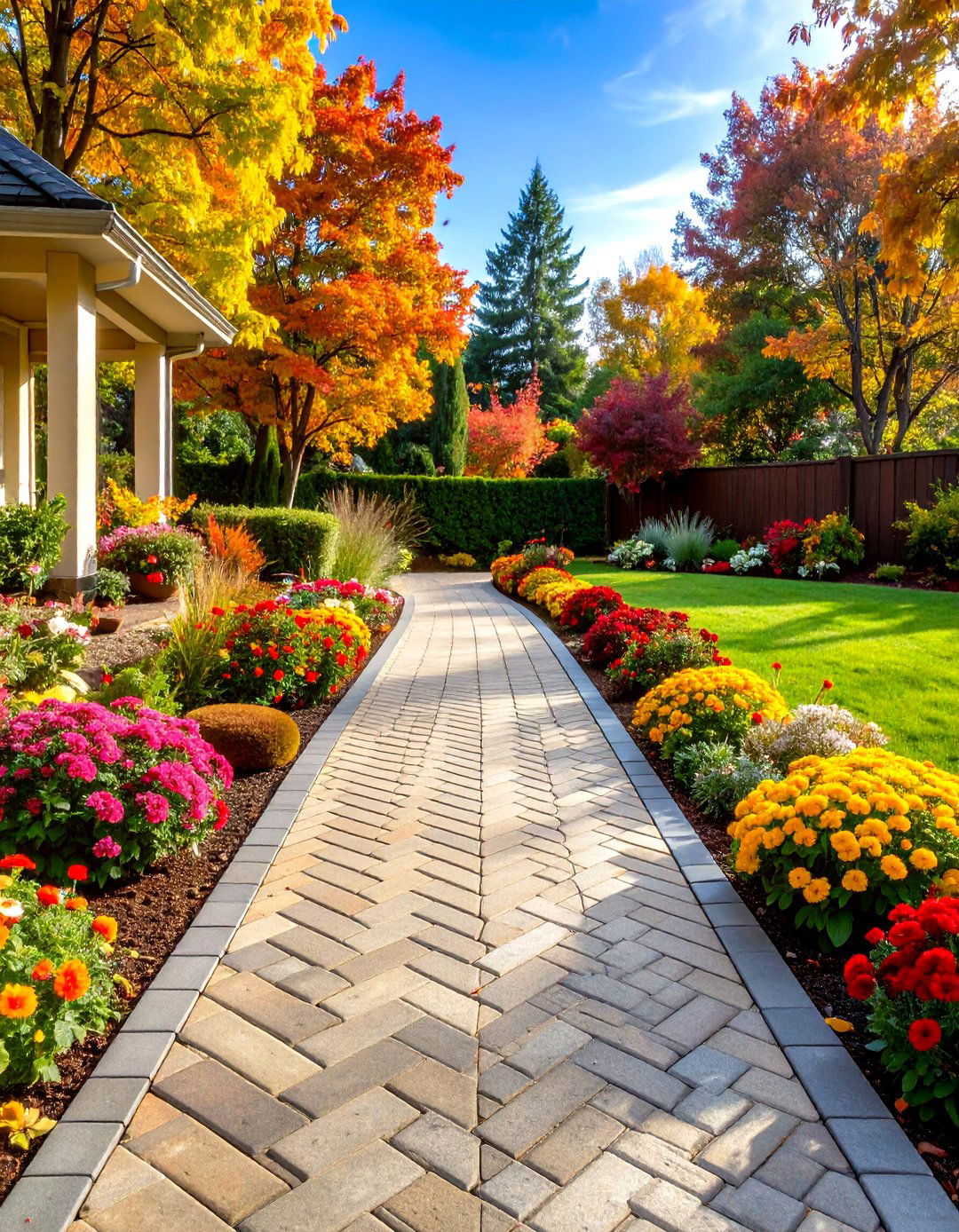
The herringbone pattern remains one of the most beloved and structurally sound paver walkway designs available today. This timeless layout involves arranging rectangular pavers in a distinctive V-shaped, zigzag formation that resembles fish bones, creating exceptional visual interest and superior interlocking strength. The pattern can be installed at either 45-degree or 90-degree angles, with the diagonal orientation offering more dynamic movement and the straight version providing cleaner lines. This design works particularly well with brick, concrete, or natural stone pavers in complementary colors. The herringbone paver walkway excels in high-traffic areas due to its structural integrity, where each paver is held securely by six surrounding pieces. Consider adding contrasting borders or mixing subtle color variations to enhance the pattern's natural beauty while maintaining its classic elegance.
2. Running Bond Paver Walkway
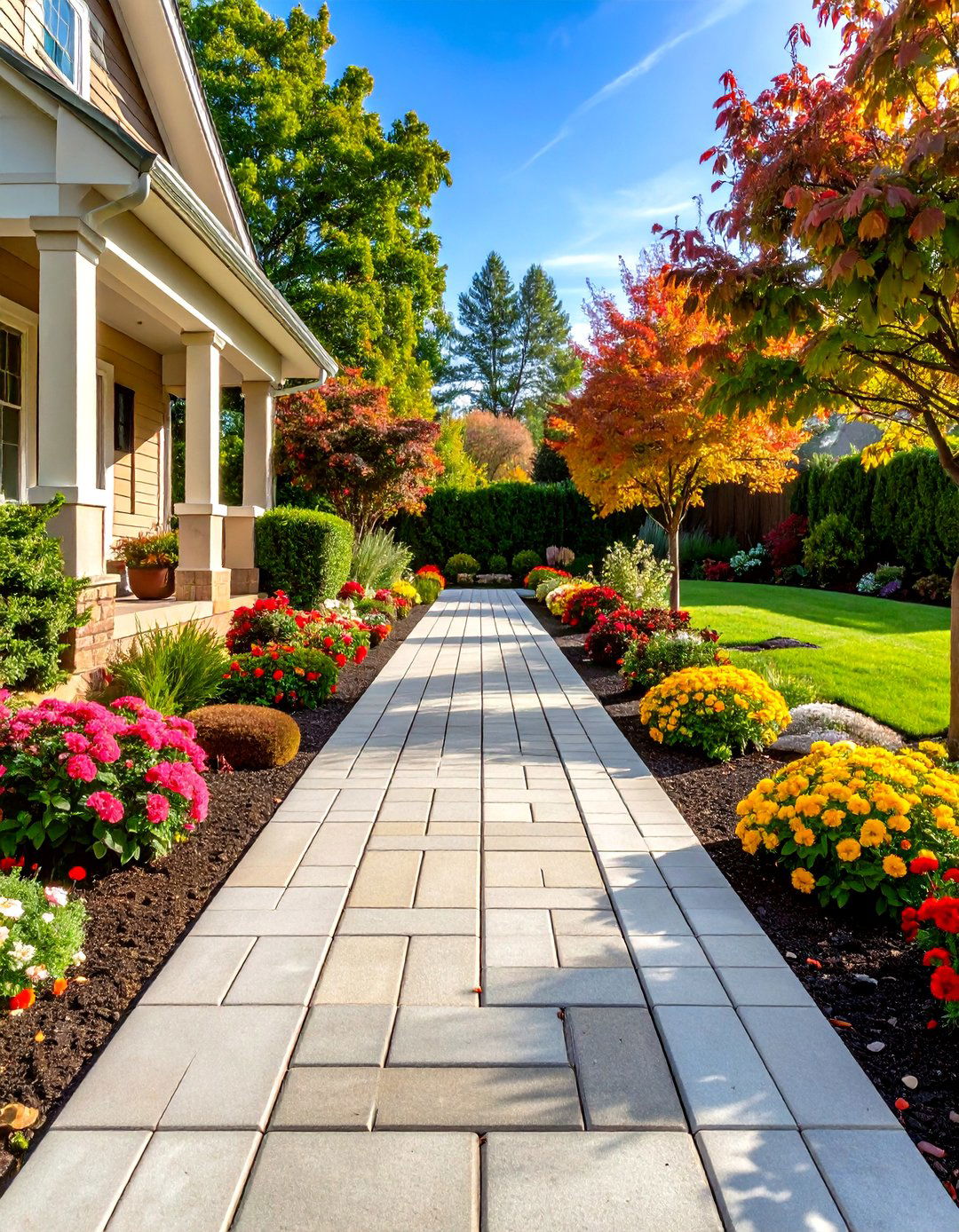
A running bond paver walkway delivers understated elegance through its simple yet sophisticated linear arrangement. This classic pattern features rectangular pavers laid in straight rows, with each subsequent row offset by half a paver length, creating a staggered effect similar to traditional brick masonry. The design offers excellent stability while remaining relatively easy to install, making it perfect for DIY enthusiasts. This versatile pattern works beautifully with various materials including concrete pavers, natural stone, and clay bricks. The clean lines of a running bond design complement both contemporary and traditional home styles, providing a neutral backdrop that allows surrounding landscaping to shine. For added visual interest, consider incorporating subtle color variations or different textures within the same material family. The pattern's simplicity also makes it cost-effective while delivering professional-looking results that enhance property value.
3. Basketweave Paver Walkway
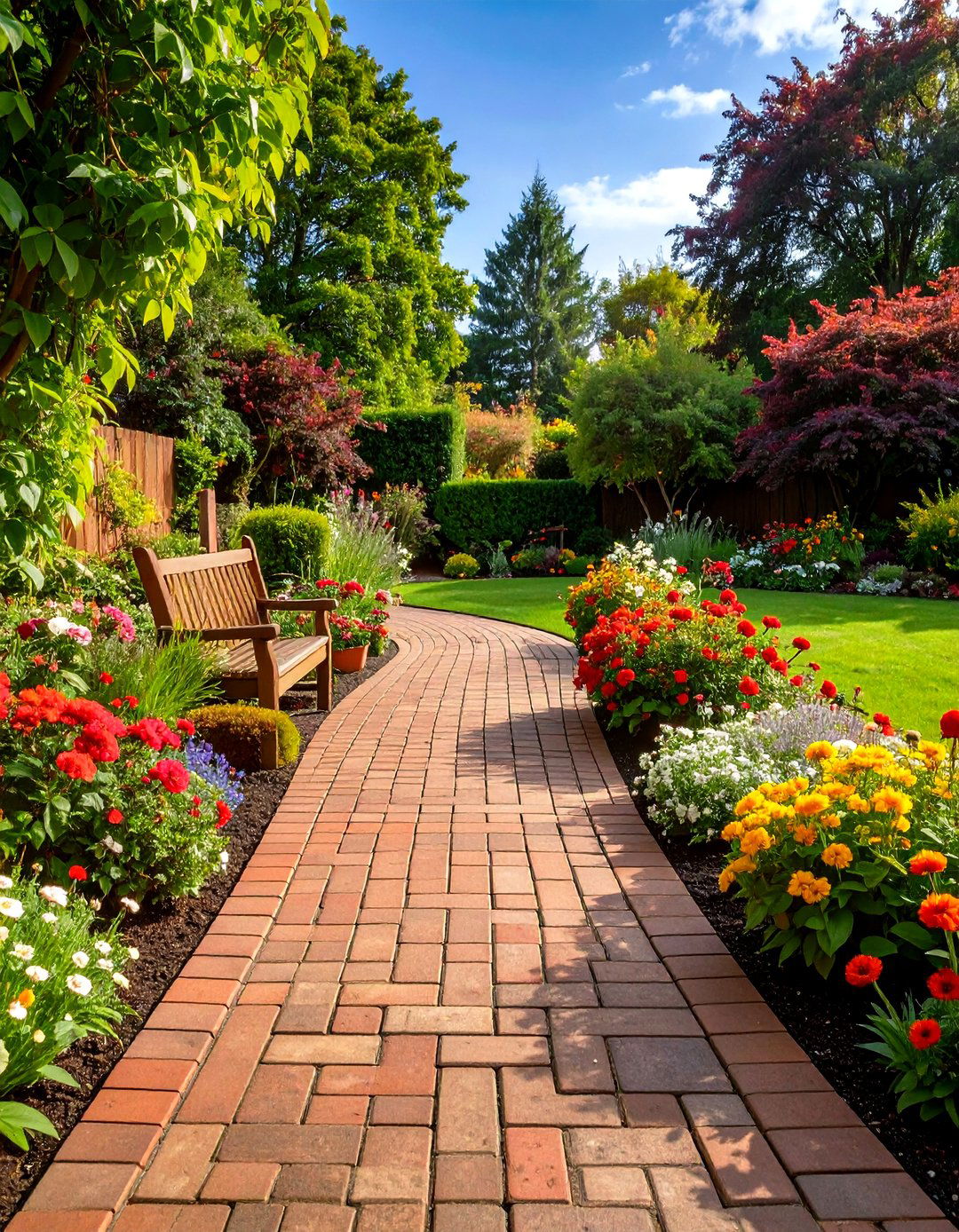
The basketweave paver walkway creates an enchanting cross-hatch pattern that mimics the appearance of woven baskets, bringing traditional craftsmanship aesthetics to your outdoor space. This design alternates pairs of horizontally and vertically laid rectangular pavers, forming neat square units that repeat across the walkway surface. The pattern works exceptionally well with brick pavers, concrete units, or natural stone, offering flexibility in color and texture choices. While basketweave patterns may not provide the same structural strength as herringbone designs, they offer tremendous visual appeal and work beautifully for moderate-traffic areas. The design can be customized by varying the number of pavers in each direction or incorporating different colored pavers to create checkerboard effects. This pattern particularly complements colonial, traditional, and cottage-style homes, adding warmth and character to entrance pathways while maintaining an organized, professional appearance.
4. Curved Paver Walkway
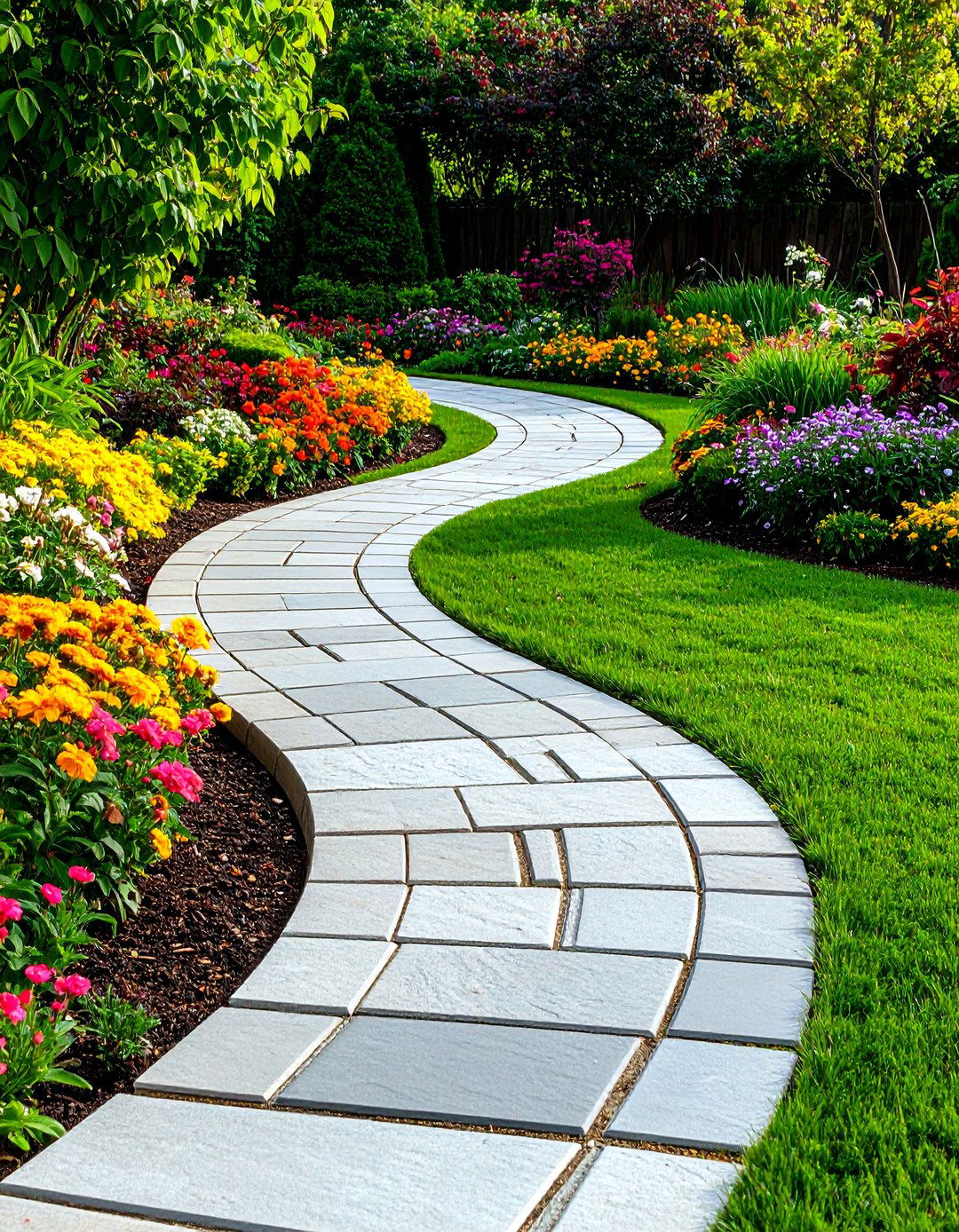
A curved paver walkway introduces graceful movement and natural flow to your landscape, creating an inviting journey that adds mystery and visual interest to your outdoor space. This design approach moves away from rigid straight lines, instead embracing gentle arcs and sweeping curves that guide visitors through your garden while showcasing plantings and architectural features. The curved layout works beautifully with various paver materials including flagstone, brick, concrete, and natural stone, allowing the pathway to blend seamlessly with organic landscaping elements. When designing curved paver walkways, consider the natural topography and existing plant locations to create harmonious transitions. The gentle curves can help make smaller spaces appear larger while providing opportunities to create focal points along the journey. This design particularly suits cottage gardens, naturalistic landscapes, and properties with rolling terrain, where the curved path can follow natural contours while providing practical access.
5. Circular Paver Walkway
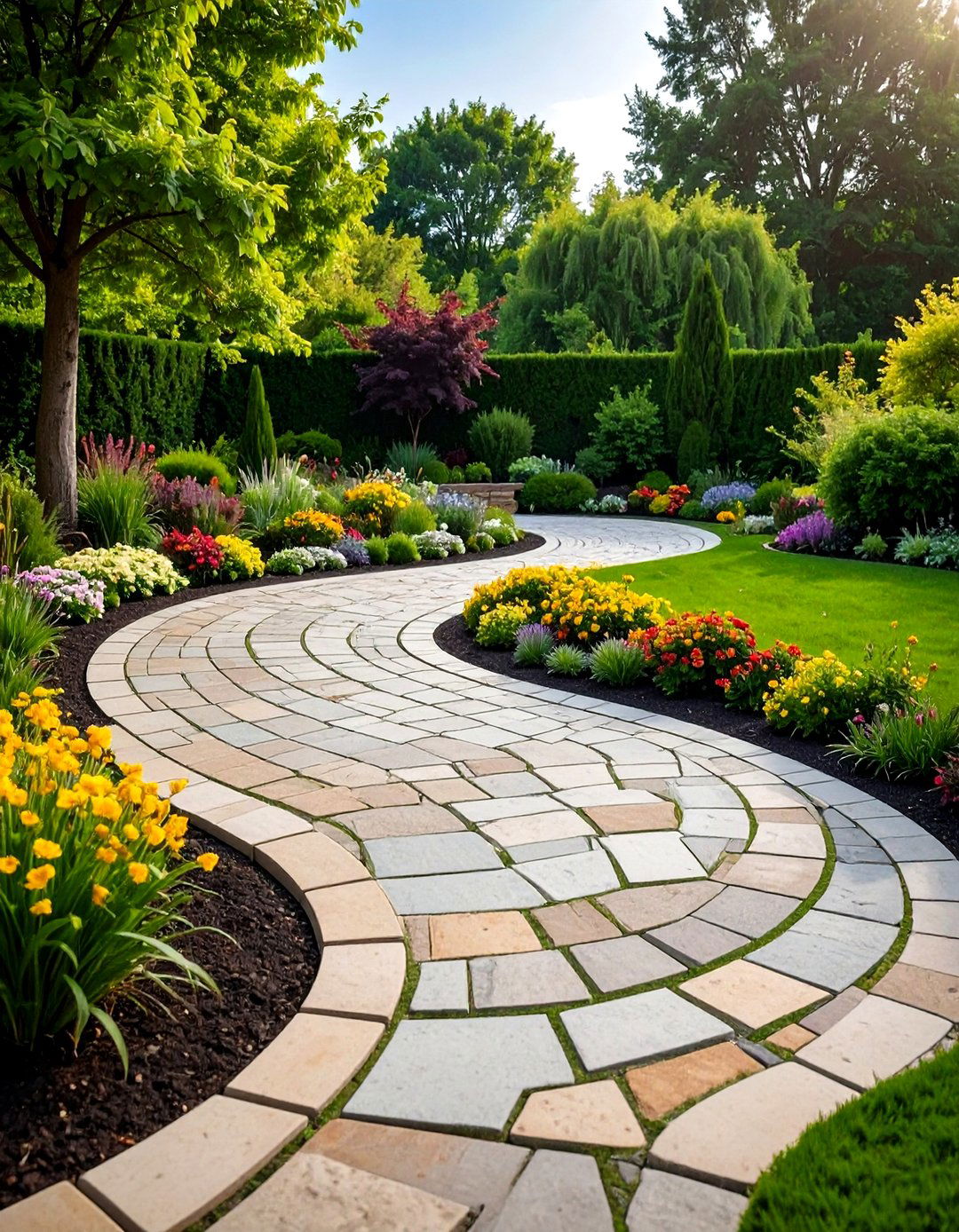
Circular paver walkways create dramatic focal points and architectural interest by incorporating round or semi-circular elements into the pathway design. These sophisticated layouts often feature specially manufactured curved pavers or circle kits that create perfect circular patterns, typically positioned at pathway intersections, entrance areas, or as standalone features. The circular design can serve as a central gathering space or simply provide visual anchoring for longer walkway stretches. This approach works exceptionally well with premium materials like natural stone, high-end concrete pavers, or brick, where the craftsmanship can be fully appreciated. The circular elements can be bordered with contrasting materials or surrounded by complementary straight-pattern sections to create stunning transitions. These walkways particularly suit formal gardens, estate-style properties, and contemporary designs where geometric precision is valued. The circular patterns also provide excellent opportunities for incorporating decorative elements like planters, lighting, or water features at the center.
6. Permeable Paver Walkway
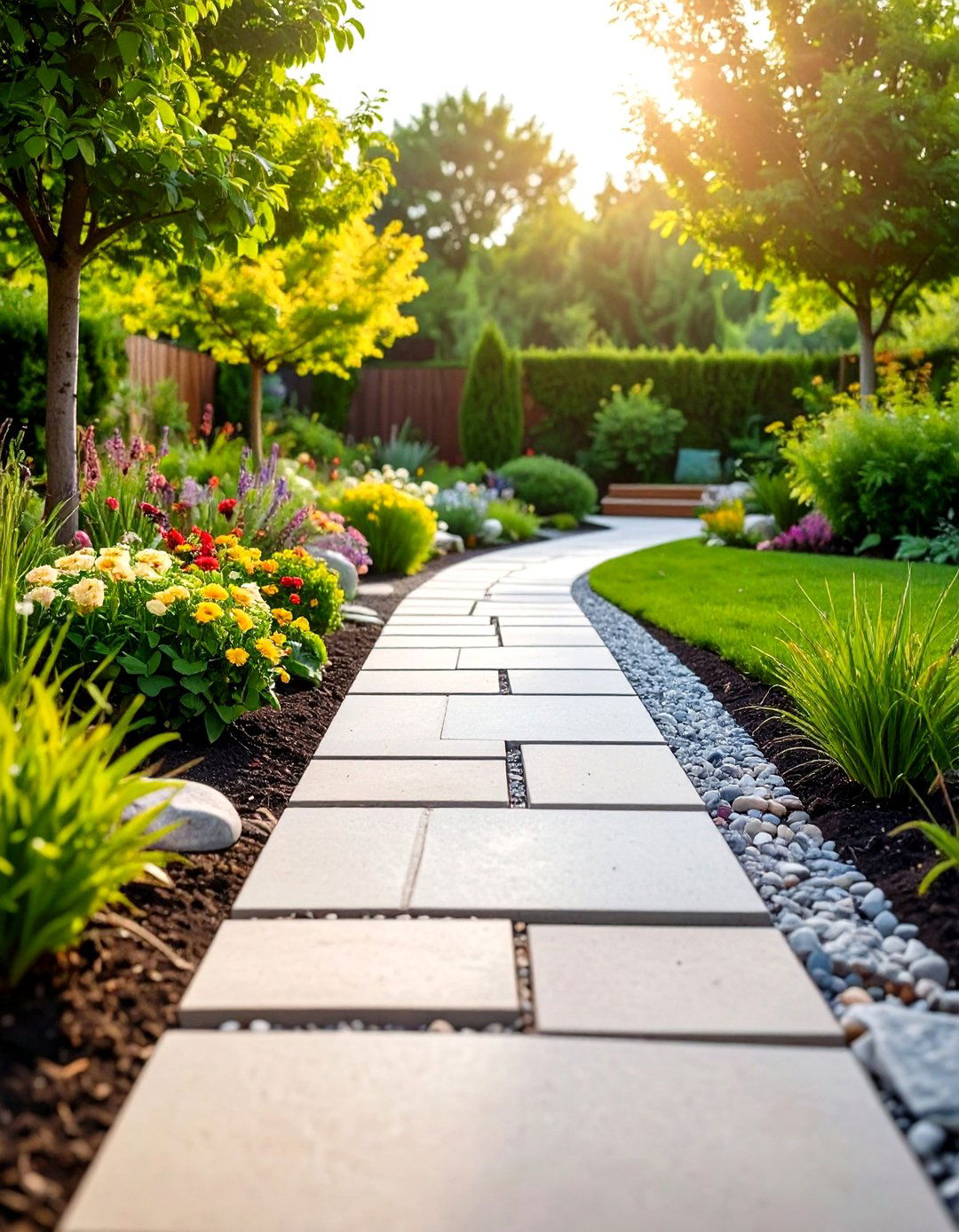
Permeable paver walkways represent the perfect fusion of environmental responsibility and functional design, allowing rainwater to filter through the surface and replenish groundwater naturally. This eco-friendly approach uses specially designed pavers with built-in spacers or wider gaps between units, filled with materials like gravel, crushed stone, or specialized permeable joint fillers. The system helps prevent water runoff, reduces flooding risks, and filters pollutants before they reach storm drains. Modern permeable pavers come in various attractive styles including concrete, natural stone, and engineered materials that maintain aesthetic appeal while providing environmental benefits. This design approach particularly suits areas with drainage challenges, environmentally conscious homeowners, and properties in water-sensitive regions. The permeable paver walkway can incorporate various laying patterns while maintaining its functional benefits, and many municipalities offer incentives for choosing these sustainable hardscape solutions that contribute to stormwater management.
7. Mixed Material Paver Walkway
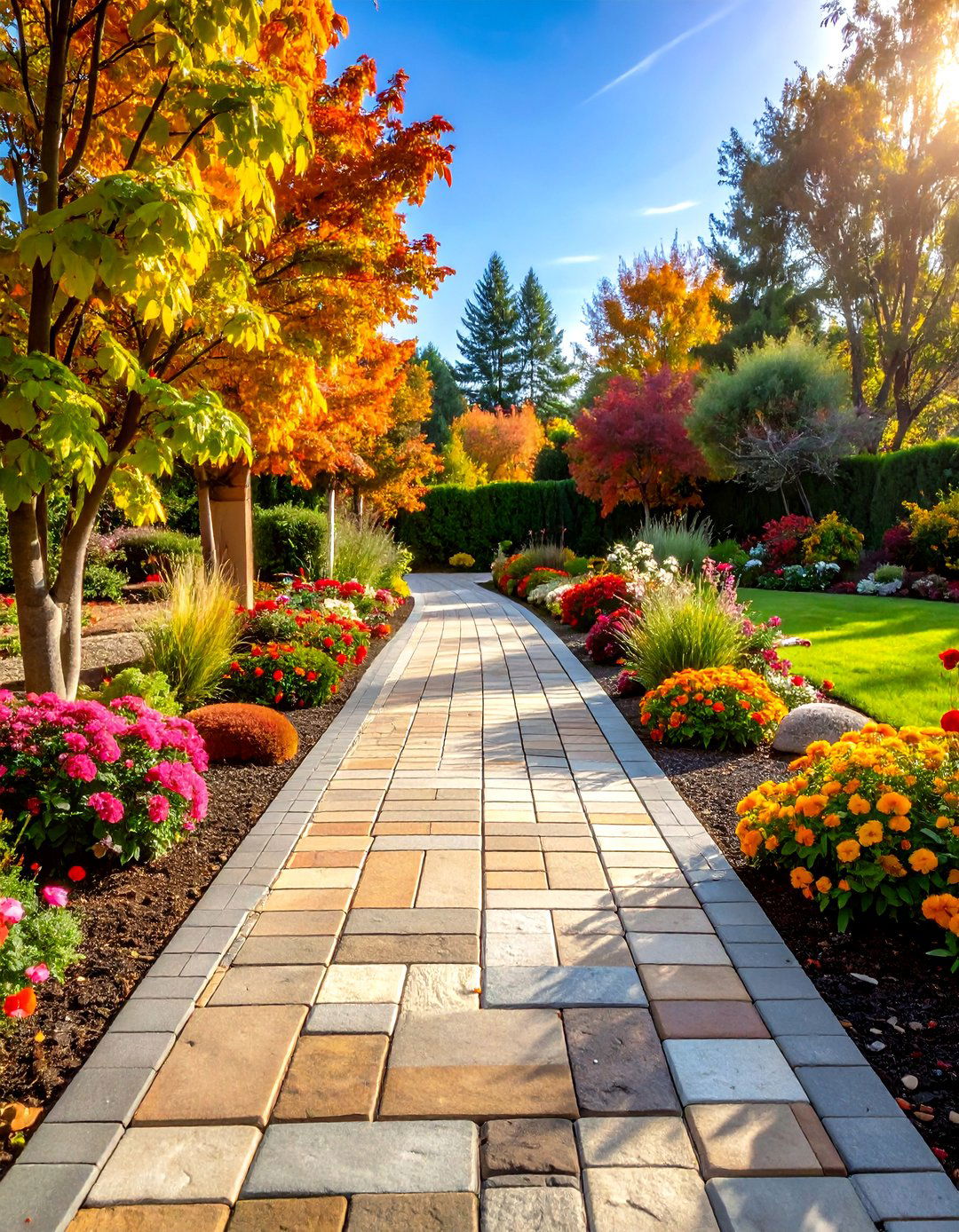
Mixed material paver walkways create dynamic, custom appearances by thoughtfully combining different paving materials, textures, and colors within a single design. This approach might blend natural stone with concrete pavers, incorporate brick borders with flagstone centers, or combine smooth and textured surfaces for added visual interest. The key to successful mixed material designs lies in maintaining harmony through complementary colors, similar scale, and cohesive patterns that unify the different elements. This versatile approach allows homeowners to create unique walkways that reflect personal style while potentially incorporating existing materials or budget considerations. The mixed material concept works particularly well for transitional spaces where the walkway connects different outdoor areas with varying design themes. Consider combining materials that share similar durability characteristics and maintenance requirements to ensure long-term success. This design approach offers endless creativity opportunities while allowing for phased construction or incorporating salvaged materials for sustainable, one-of-a-kind results.
8. Geometric Paver Walkway
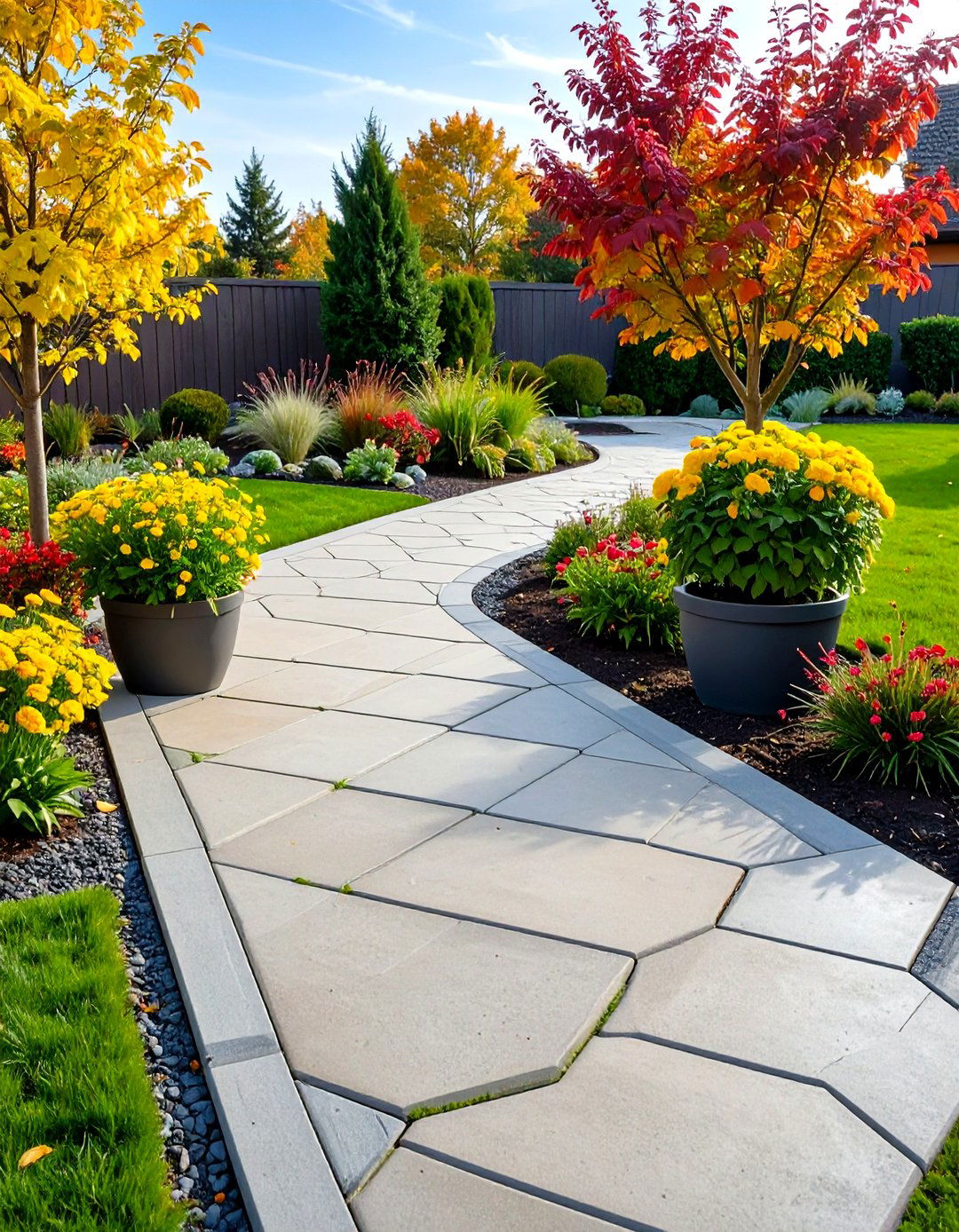
Geometric paver walkways embrace bold, contemporary design through precise angular patterns and mathematical precision that create striking modern aesthetics. These sophisticated layouts feature interlocking rectangles, diamonds, hexagons, or complex polygonal arrangements that challenge traditional paving approaches. The geometric design works exceptionally well with large-format concrete pavers, natural stone slabs, or engineered materials that can achieve clean, sharp edges essential for crisp pattern definition. This approach particularly complements contemporary architecture, minimalist landscapes, and modern outdoor living spaces where clean lines and architectural precision are valued. The geometric patterns can incorporate color blocking, alternating textures, or varying paver sizes to create additional visual complexity. These walkways often serve as artistic elements in their own right, transforming functional pathways into outdoor sculptures. The precision required for geometric designs typically demands professional installation but delivers stunning results that significantly enhance property value and architectural coherence.
9. Cobblestone Paver Walkway
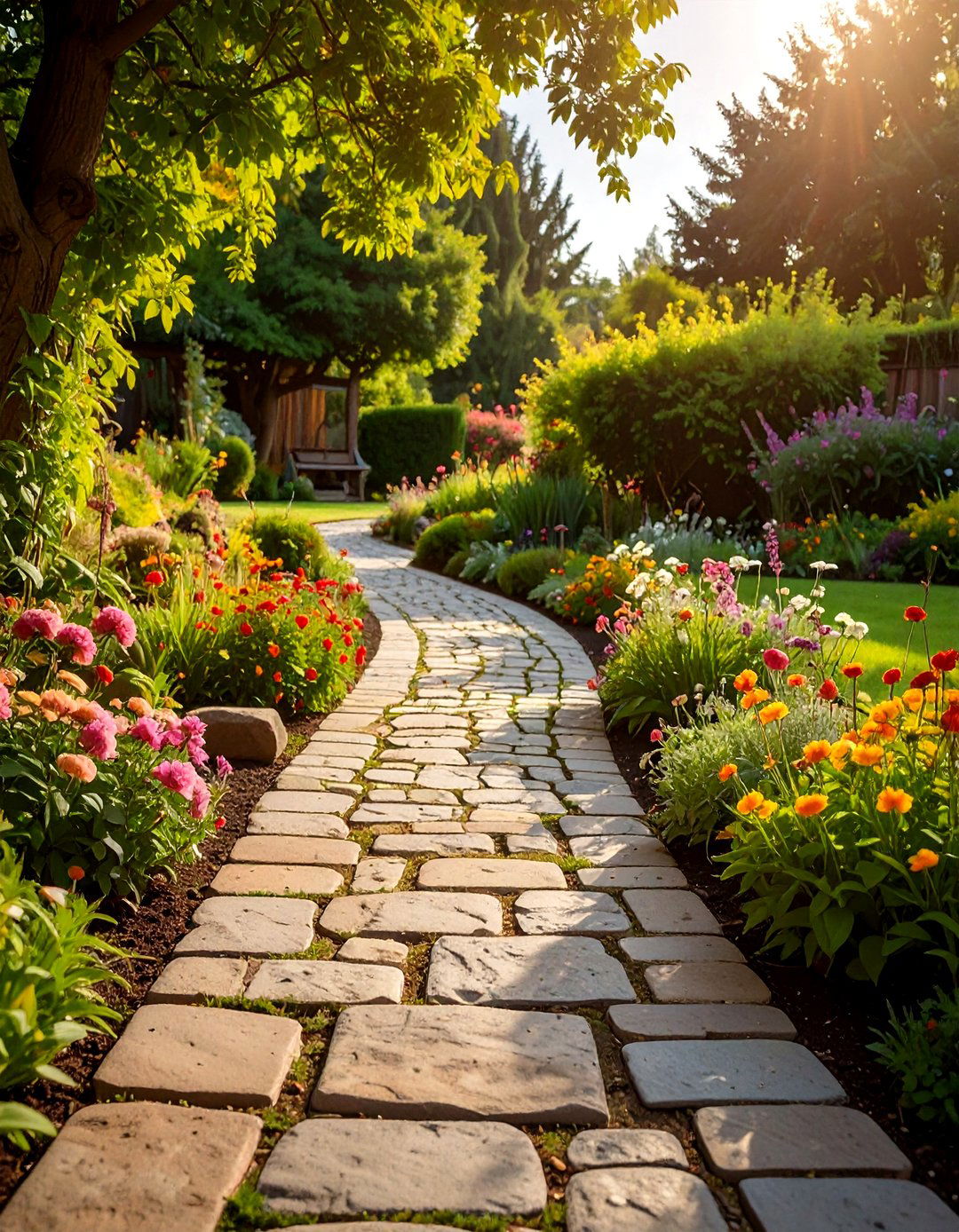
Cobblestone paver walkways evoke timeless European charm and historical authenticity, creating pathways that blend rustic character with enduring durability. These designs use individual cobblestone units or modern cobblestone-look pavers that capture the irregular, weathered appearance of traditional stone streets. The naturally varied shapes and sizes create organic patterns that complement cottage gardens, traditional architecture, and naturalistic landscapes. Modern cobblestone pavers offer the aesthetic appeal of historical materials with improved consistency and easier installation. The design works beautifully with earth-tone color palettes and can be enhanced with moss or ground cover plants growing between stones for added authenticity. Cobblestone paver walkways provide excellent slip resistance and natural drainage while requiring minimal maintenance once established. This design approach particularly suits properties with historical character, English garden styles, or anywhere timeless elegance is desired. The irregular patterns also help disguise minor settling or movement that might occur over time.
10. Flagstone Paver Walkway

Flagstone paver walkways showcase natural stone's inherent beauty through irregular shapes, varied textures, and rich color variations that create organic, free-flowing pathways. This design approach uses flat stone pieces in natural shapes that fit together like puzzle pieces, creating unique patterns that can never be exactly replicated. The natural variations in flagstone—including slate, bluestone, limestone, and sandstone—provide color palettes ranging from subtle grays to warm earth tones. Each flagstone piece brings its own character, making every walkway a distinctive work of art. The irregular shapes require skilled installation but create pathways that integrate seamlessly with natural landscapes, water features, and informal garden designs. Flagstone paver walkways can be installed with tight joints for formal appearances or wider gaps filled with gravel, moss, or ground cover for more casual aesthetics. This design particularly suits properties with natural settings, mountain homes, or anywhere authentic stone character is valued.
11. Stepping Stone Paver Walkway
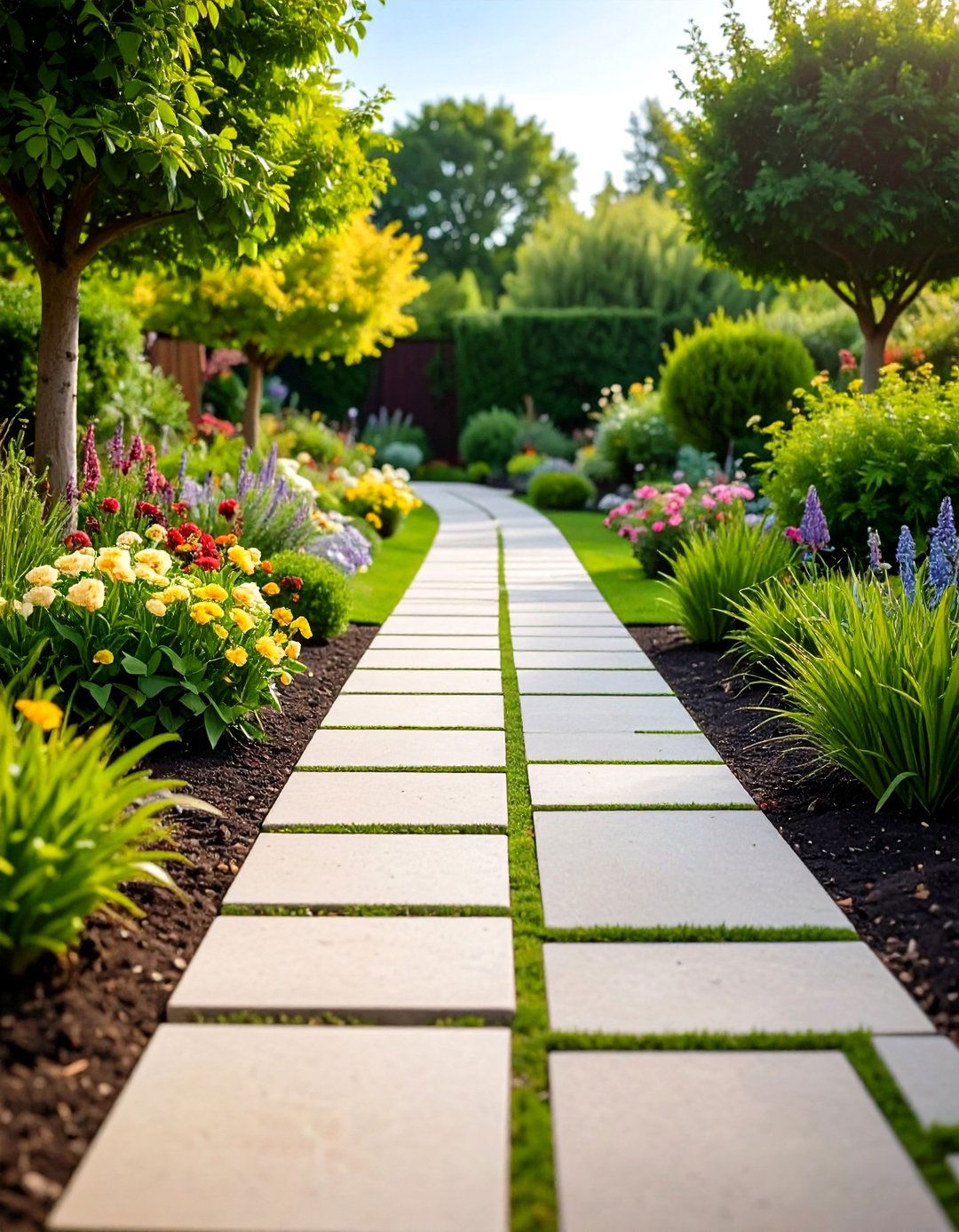
Stepping stone paver walkways create charming, informal pathways that blend hardscape functionality with natural landscape integration. This design approach uses individual pavers spaced at comfortable walking intervals, typically 18-24 inches apart, with gaps filled by grass, ground cover, gravel, or mulch. The stepping stone concept works beautifully with various materials including large concrete pavers, natural stone slabs, or even repurposed materials for unique character. This design allows for creative expression through paver shape, size, and placement patterns while providing practical pathway functionality. The spaces between stepping stones offer opportunities for planting colorful perennials, aromatic herbs, or textural grasses that enhance the walkway's appeal. Stepping stone paver walkways particularly suit cottage gardens, informal landscapes, and areas where full paved surfaces might feel too imposing. The design also offers excellent drainage and can adapt to natural terrain variations while maintaining visual continuity throughout the landscape.
12. Bordered Paver Walkway
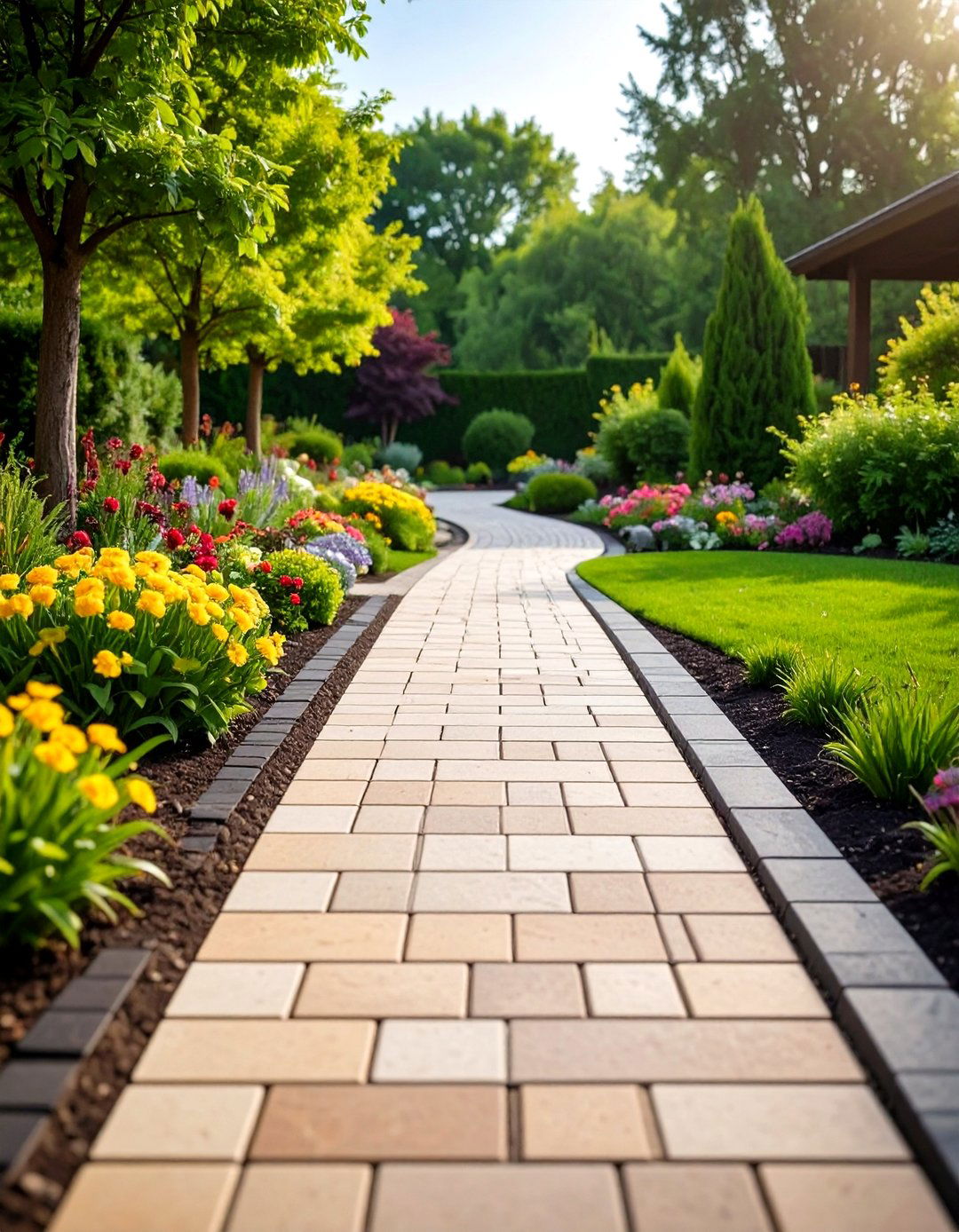
Bordered paver walkways create sophisticated, finished appearances through contrasting edge treatments that define pathway boundaries while adding visual interest and structural integrity. This design approach uses different colored, sized, or textured pavers along the walkway edges, creating frames that enhance the main paving pattern. Border treatments can range from simple soldier courses (pavers laid end-to-end) to complex geometric patterns that complement the central pathway design. The borders serve practical purposes by providing edge restraint to prevent paver movement while creating opportunities for color contrast and pattern variation. Common border approaches include using darker pavers to frame lighter centers, incorporating different materials like brick borders with stone centers, or creating multiple border rows for formal estates. Bordered paver walkways work particularly well with traditional architecture, formal gardens, and anywhere crisp definition is desired. The border elements also provide transition opportunities between different paving areas or landscape zones.
13. Brick Paver Walkway
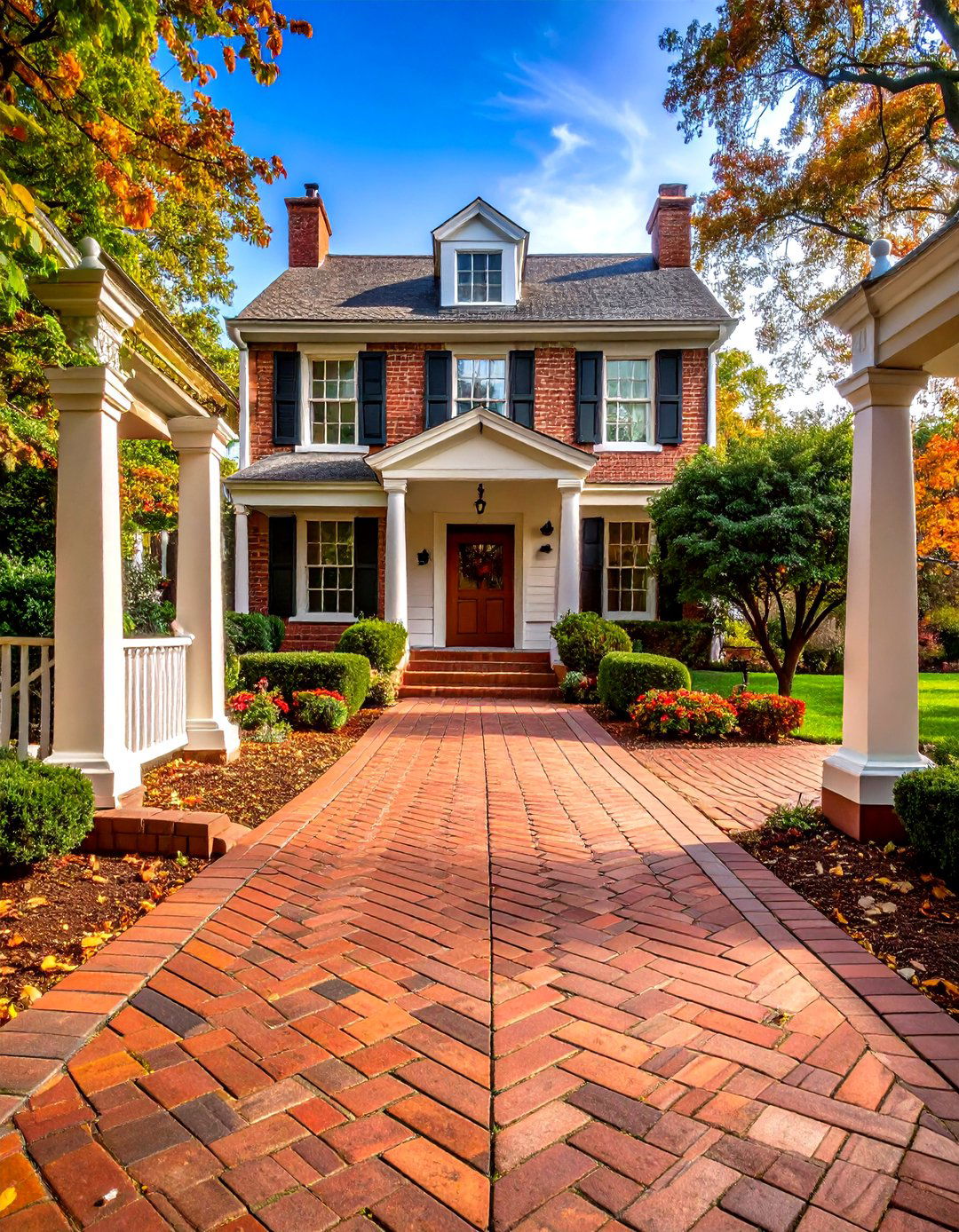
Brick paver walkways deliver timeless appeal through warm, earthy colors and traditional craftsmanship that complements virtually any architectural style. These classic designs use clay or concrete brick pavers in various laying patterns including running bond, herringbone, basketweave, or stack bond arrangements. The rich color variations in brick—from deep reds to warm browns and subtle oranges—create pathways that age beautifully while maintaining their character. Modern brick pavers offer improved durability and consistency compared to traditional materials while retaining authentic appearance. The uniform size and shape of brick pavers make them ideal for creating precise patterns and clean lines that enhance formal or traditional landscape designs. Brick paver walkways can be enhanced with contrasting borders, decorative inlays, or varying colors to create custom appearances. This design approach particularly suits colonial, traditional, and cottage-style homes where historical authenticity and proven durability are valued. The natural porosity of brick also provides excellent slip resistance and weather performance.
14. Concrete Paver Walkway

Concrete paver walkways offer exceptional versatility through extensive color options, varied textures, and multiple size configurations that accommodate both contemporary and traditional design approaches. Modern concrete pavers can mimic natural stone, brick, or wood appearances while providing superior durability and consistent dimensions. The manufacturing process allows for precise color matching and texture replication, creating unified appearances that complement any architectural style. Concrete pavers come in numerous shapes including rectangles, squares, hexagons, and specialty forms that enable creative pattern development. The material's strength and weather resistance make it ideal for high-traffic areas while maintaining attractive appearances with minimal maintenance. Concrete paver walkways can incorporate integral colors, surface treatments, or decorative aggregates to create custom appearances. This design approach offers excellent value while providing professional results that enhance property value. The precision manufacturing also ensures consistent installation and long-term performance in various climate conditions.
15. Mosaic Paver Walkway

Mosaic paver walkways transform functional pathways into artistic masterpieces through intricate patterns, color combinations, and creative designs that express personal style. This sophisticated approach uses pavers of varying colors, textures, and sometimes sizes to create complex geometric patterns, representational images, or abstract compositions. The mosaic concept can incorporate traditional materials like ceramic tiles, natural stone pieces, or colored concrete pavers arranged in predetermined patterns. This design approach requires careful planning and skilled installation but delivers truly unique results that serve as outdoor art installations. Mosaic paver walkways can incorporate family initials, house numbers, directional arrows, or decorative motifs that personalize the pathway while maintaining functionality. The artistic possibilities are virtually unlimited, from simple color blocks to complex pictorial representations. This design particularly suits homeowners who value artistic expression and unique character in their outdoor spaces. The mosaic approach also allows for incorporating meaningful elements or creating themed connections to architectural or landscape features.
16. Wide Paver Walkway
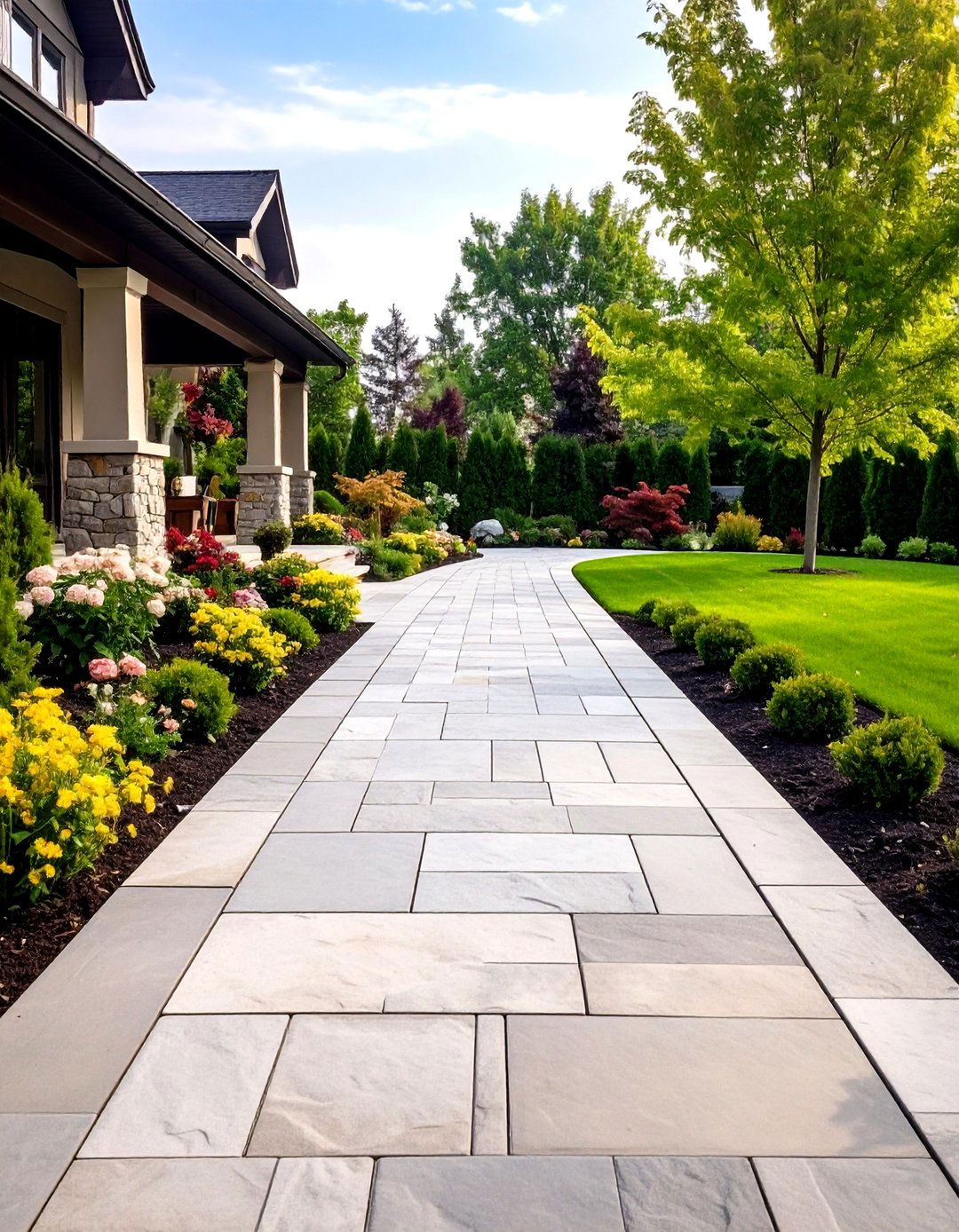
Wide paver walkways create grand, welcoming approaches that accommodate multiple pedestrians while making bold architectural statements. These generous pathway designs, typically 5-8 feet wide, provide comfortable space for side-by-side walking while creating opportunities for impressive pattern displays and formal landscape integration. The increased width allows for more complex paving patterns, multiple border treatments, or central design elements that wouldn't be visible in narrower pathways. Wide paver walkways particularly suit large properties, formal entrances, or areas where the pathway serves as a significant landscape feature. The broader surface can accommodate various materials including large-format pavers, natural stone slabs, or intricate pattern combinations that create stunning visual impacts. This design approach works exceptionally well with estate-style homes, commercial properties, or anywhere grand impressions are desired. The wide format also provides opportunities for integrated lighting, planters, or decorative elements that enhance the pathway's functionality and aesthetic appeal.
17. Narrow Paver Walkway
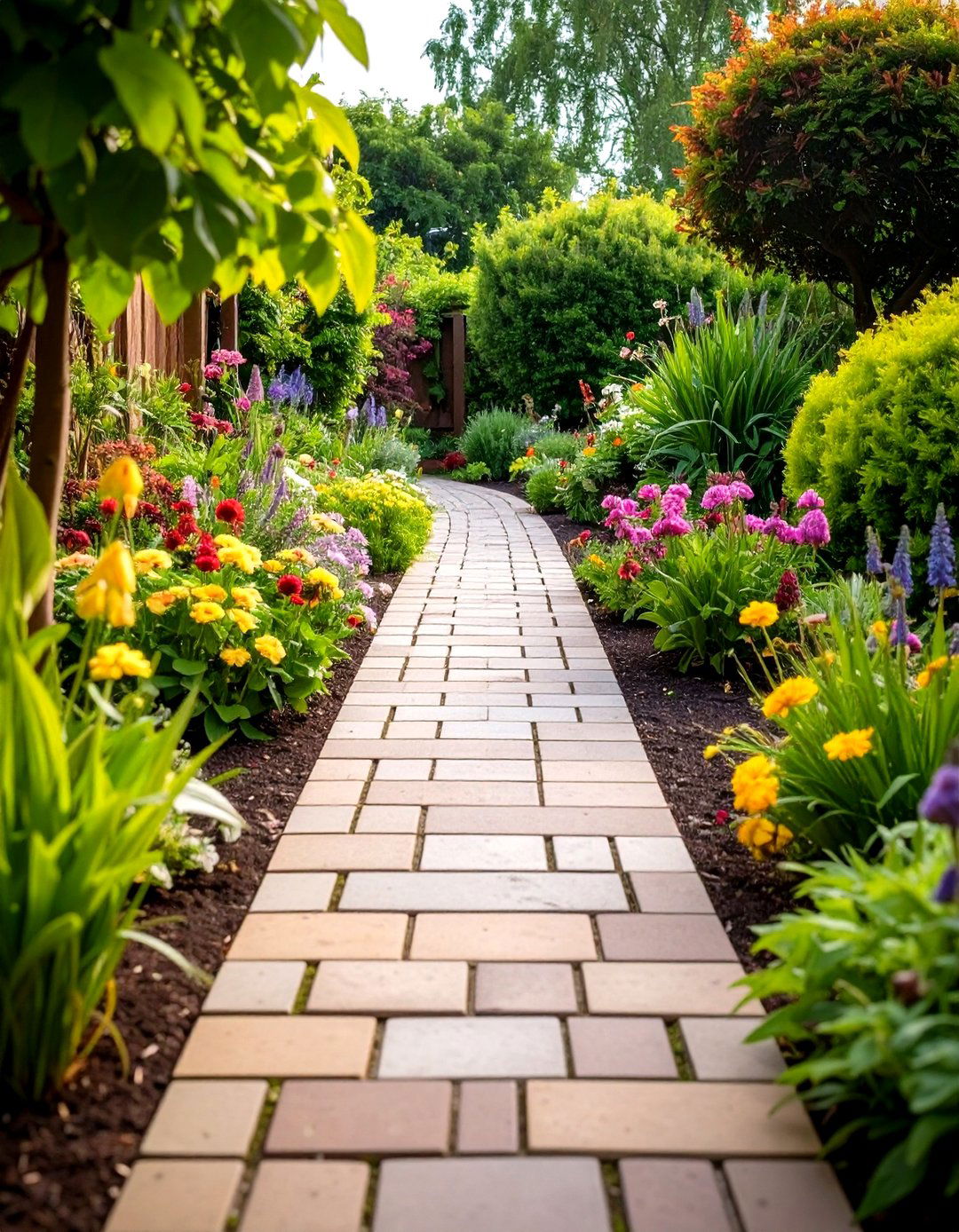
Narrow paver walkways create intimate, charming pathways that navigate efficiently through gardens while maintaining proportional relationships with surrounding landscapes. These space-conscious designs, typically 2-3 feet wide, work perfectly for secondary pathways, garden exploration routes, or areas where space constraints require efficient solutions. The narrow format emphasizes linear patterns and can create sense of journey and discovery as visitors navigate through planted areas. Despite their modest width, narrow paver walkways can incorporate sophisticated patterns, quality materials, and attractive borders that deliver impressive results. This design approach particularly suits cottage gardens, small urban spaces, or anywhere efficient circulation is needed without overwhelming the landscape. The narrow profile also allows for creative curve integration and can follow natural terrain contours more easily than wider installations. These walkways often serve as connecting elements between different garden areas while providing practical access for maintenance and enjoyment.
18. Illuminated Paver Walkway
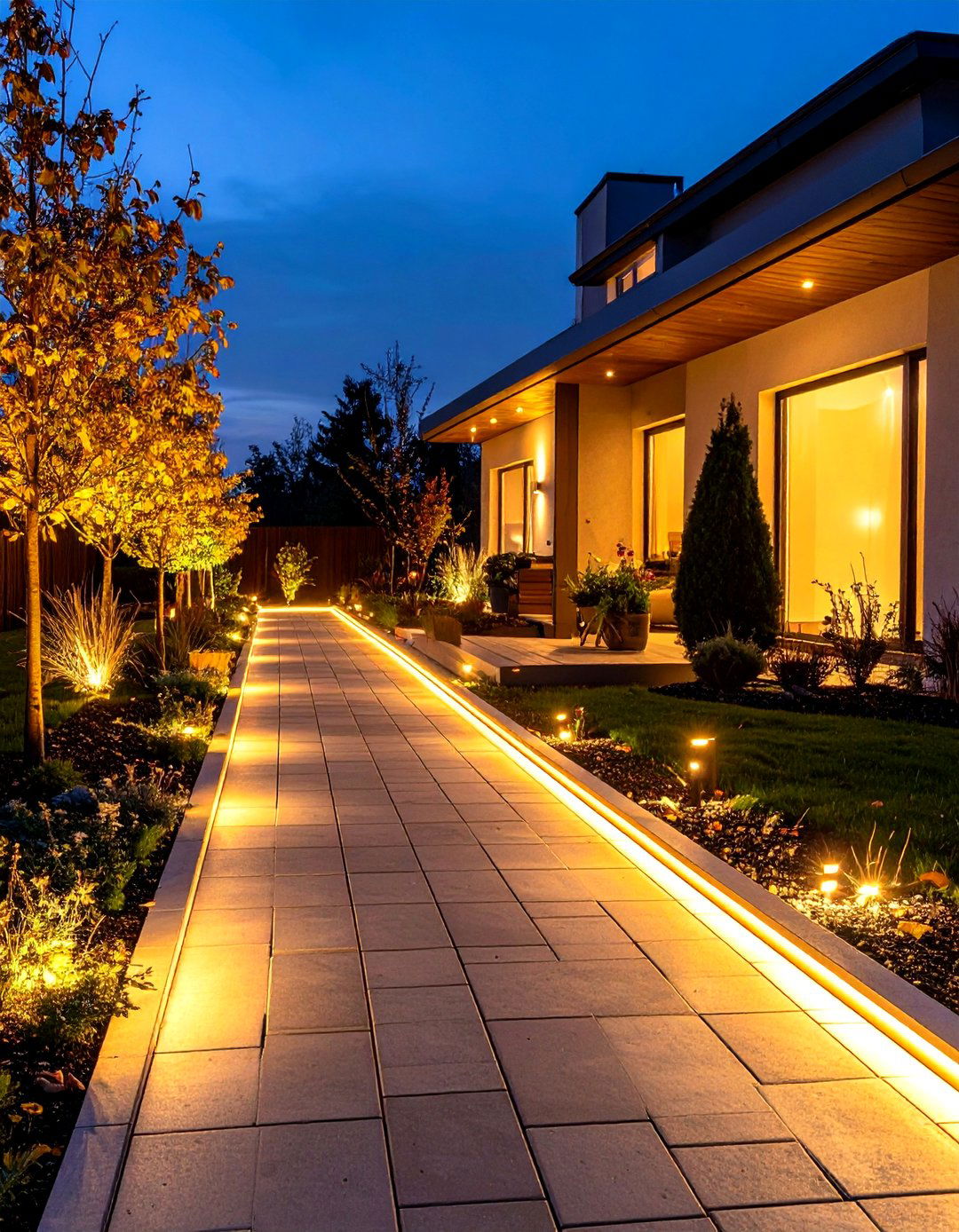
Illuminated paver walkways combine functional lighting with hardscape design to create stunning nighttime landscapes while ensuring safe navigation after dark. This sophisticated approach incorporates LED lights, solar fixtures, or integrated lighting systems that enhance the walkway's beauty while providing practical illumination. The lighting can be integrated into the pavers themselves, installed along borders, or positioned strategically to highlight pattern elements and create dramatic effects. Modern LED technology offers energy-efficient solutions that can create various lighting effects from subtle guidance to dramatic accent lighting. The illuminated design works particularly well with contemporary architecture, entertainment areas, or anywhere nighttime use is important. Solar-powered options provide sustainable solutions that require minimal maintenance while delivering reliable performance. Illuminated paver walkways can incorporate color-changing capabilities, motion sensors, or programmable controls that adapt to usage patterns and preferences. This design approach significantly enhances property value while creating magical outdoor experiences that extend usable hours.
19. Recycled Paver Walkway
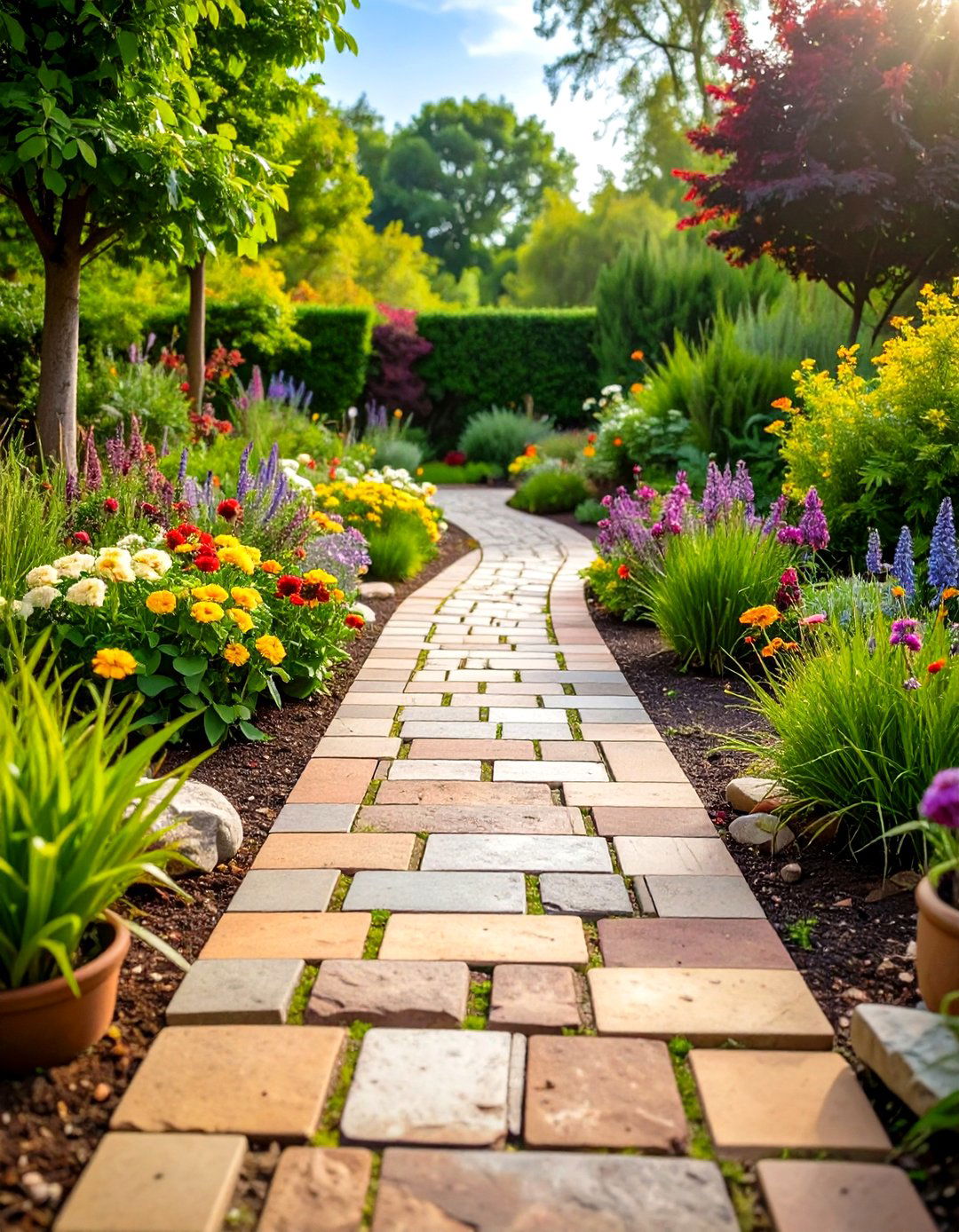
Recycled paver walkways offer environmentally conscious solutions that combine sustainability with distinctive character through reclaimed materials and eco-friendly construction practices. This approach uses salvaged bricks, reclaimed concrete pavers, or repurposed stone materials that carry historical character while reducing environmental impact. The aged appearance of recycled materials provides instant weathered charm that new materials cannot replicate, creating pathways with authentic character and unique stories. Recycled paver walkways often feature irregular colors, varied textures, and slight imperfections that add to their appeal and authenticity. This design approach particularly suits environmentally conscious homeowners, historical restoration projects, or anywhere sustainable practices are valued. The recycled materials can often be obtained at reduced costs while providing superior character compared to new alternatives. The installation process may require additional sorting and fitting work, but the results deliver one-of-a-kind pathways that reflect environmental responsibility while maintaining attractive appearances and functional performance.
20. Modern Slab Paver Walkway

Modern slab paver walkways embrace contemporary minimalism through large-format pavers that create clean, uncluttered pathways with emphasis on materials and proportions rather than complex patterns. This sophisticated approach uses oversized concrete slabs, natural stone pieces, or engineered materials that minimize joint lines while maximizing surface continuity. The large format creates sense of spaciousness and architectural precision that complements modern home designs and minimalist landscapes. Modern slab paver walkways often feature subtle color variations, smooth textures, and precise installation that emphasizes quality materials and craftsmanship. This design approach works particularly well with contemporary architecture, urban landscapes, or anywhere clean, sophisticated aesthetics are desired. The reduced joint lines also mean less maintenance and cleaner appearances over time. Large slabs can be enhanced with contrasting borders, integrated lighting, or strategic gaps for planting that add visual interest while maintaining overall simplicity and elegance.
Conclusion:
Paver walkways offer tremendous versatility in transforming outdoor spaces through diverse design approaches that range from traditional patterns to contemporary innovations. Each design theme provides unique benefits, whether emphasizing durability, aesthetic appeal, environmental responsibility, or architectural integration. The key to successful paver walkway design lies in selecting approaches that complement your home's style, meet functional requirements, and reflect personal preferences while considering maintenance and long-term performance. With proper planning and quality materials, any of these 20 paver walkway ideas can significantly enhance your property's curb appeal, functionality, and value while creating welcoming pathways that guide visitors through your outdoor spaces.


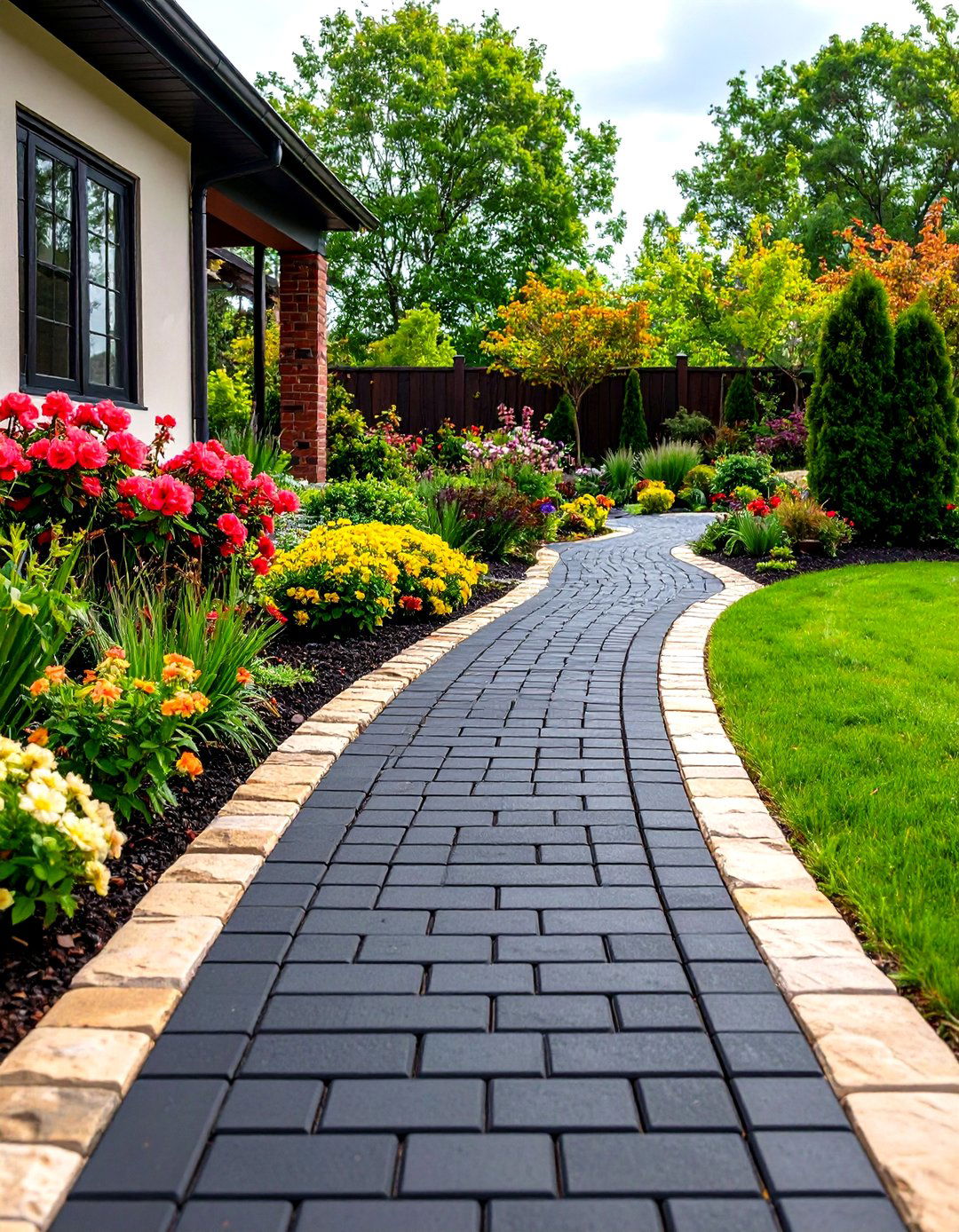
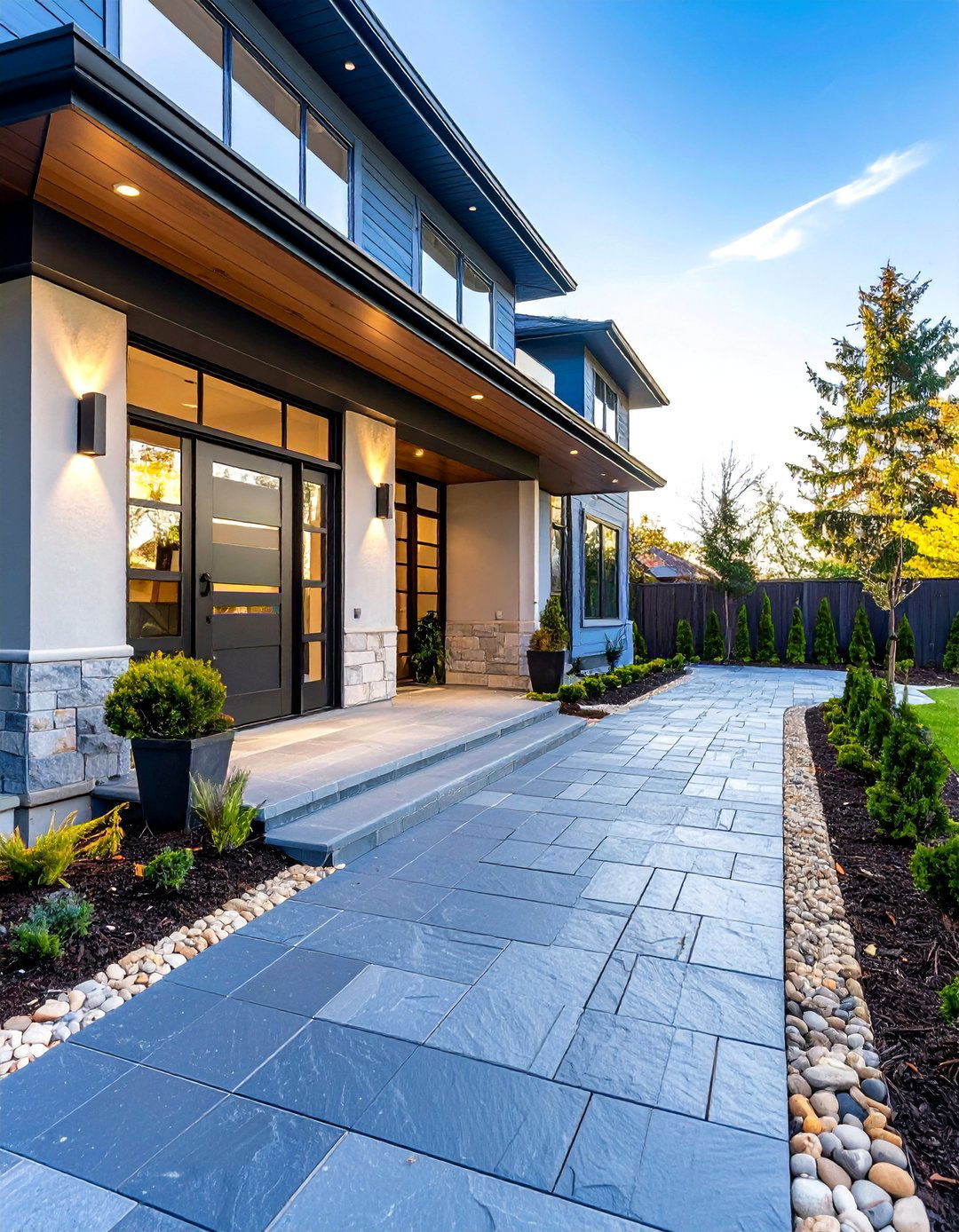
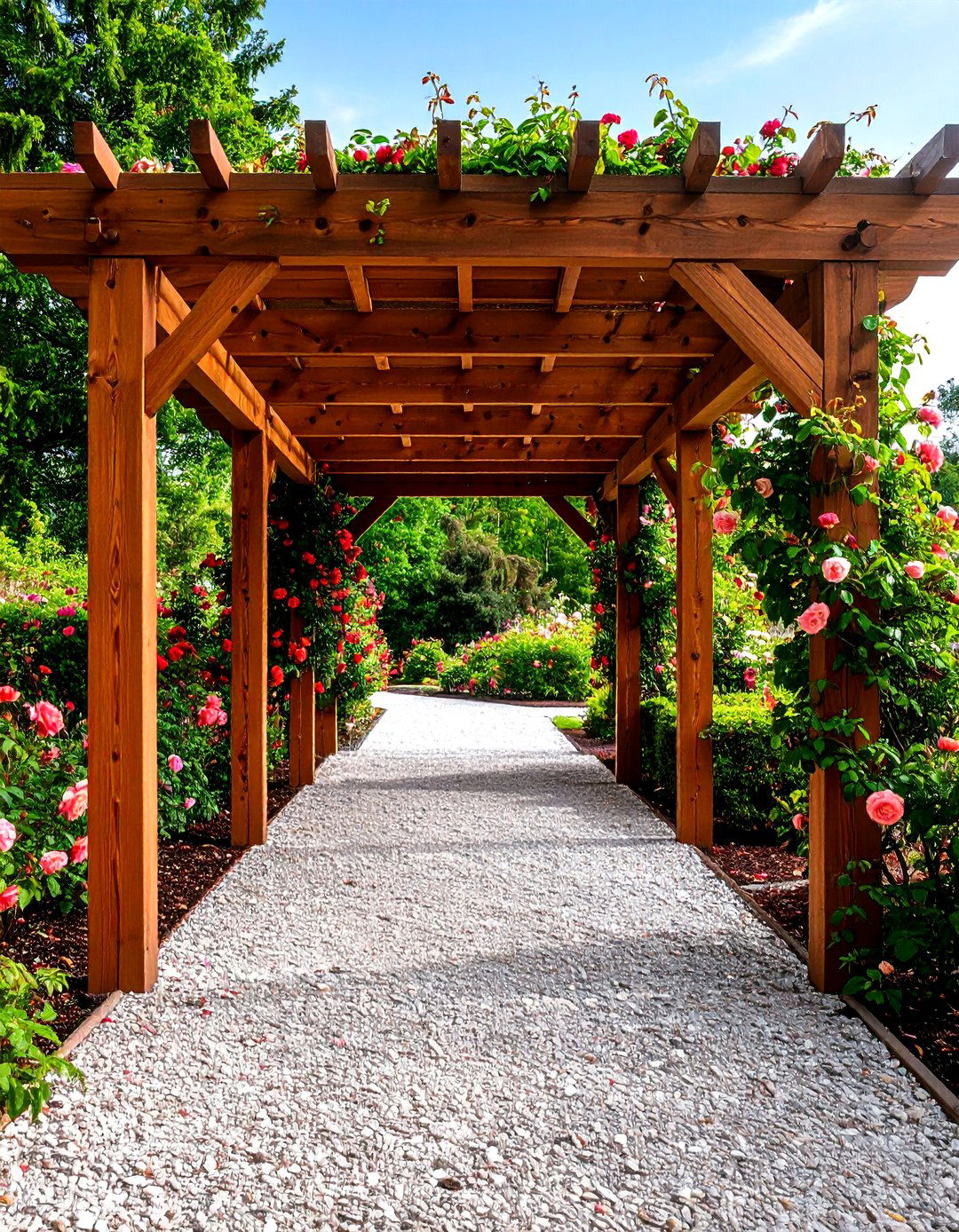
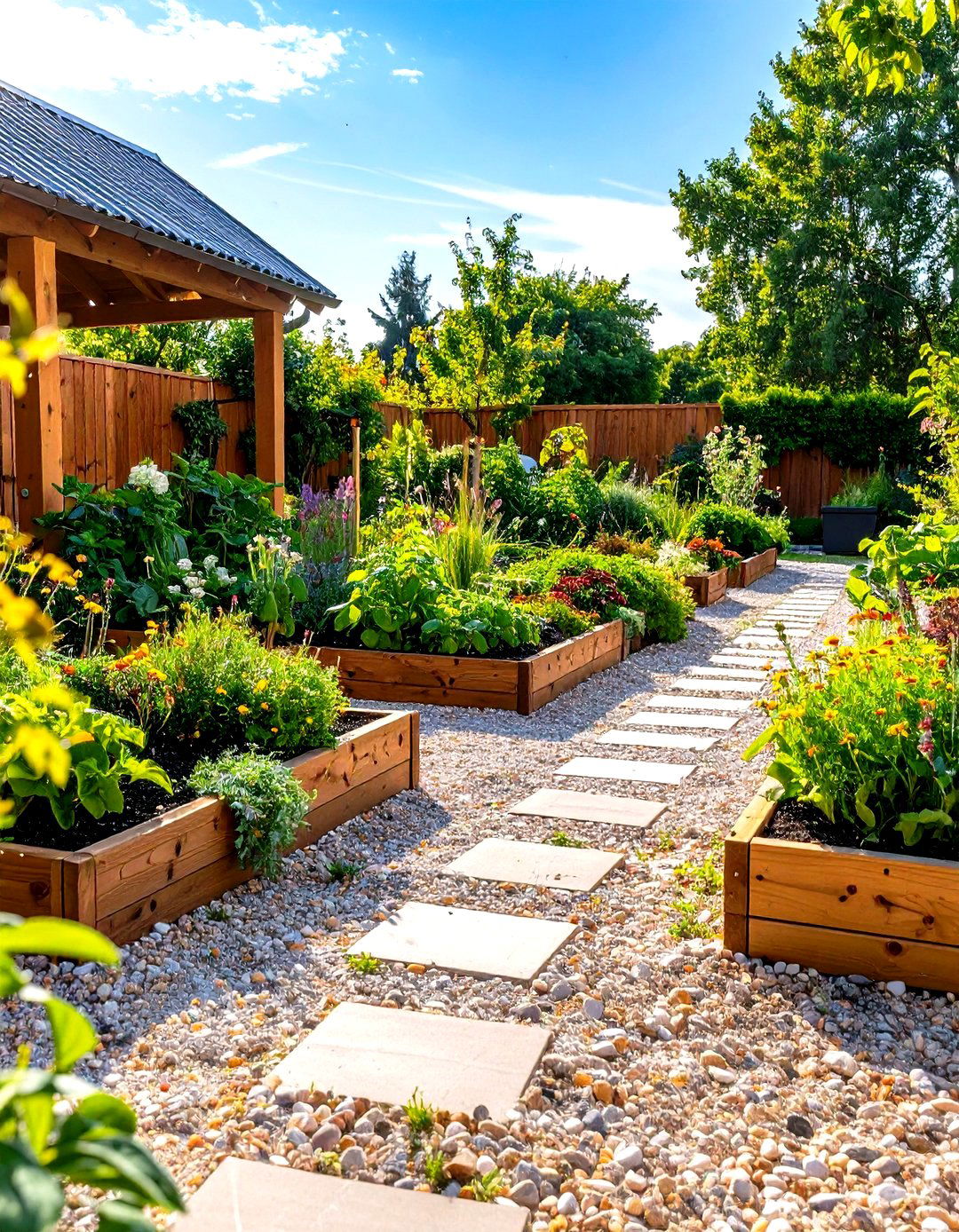
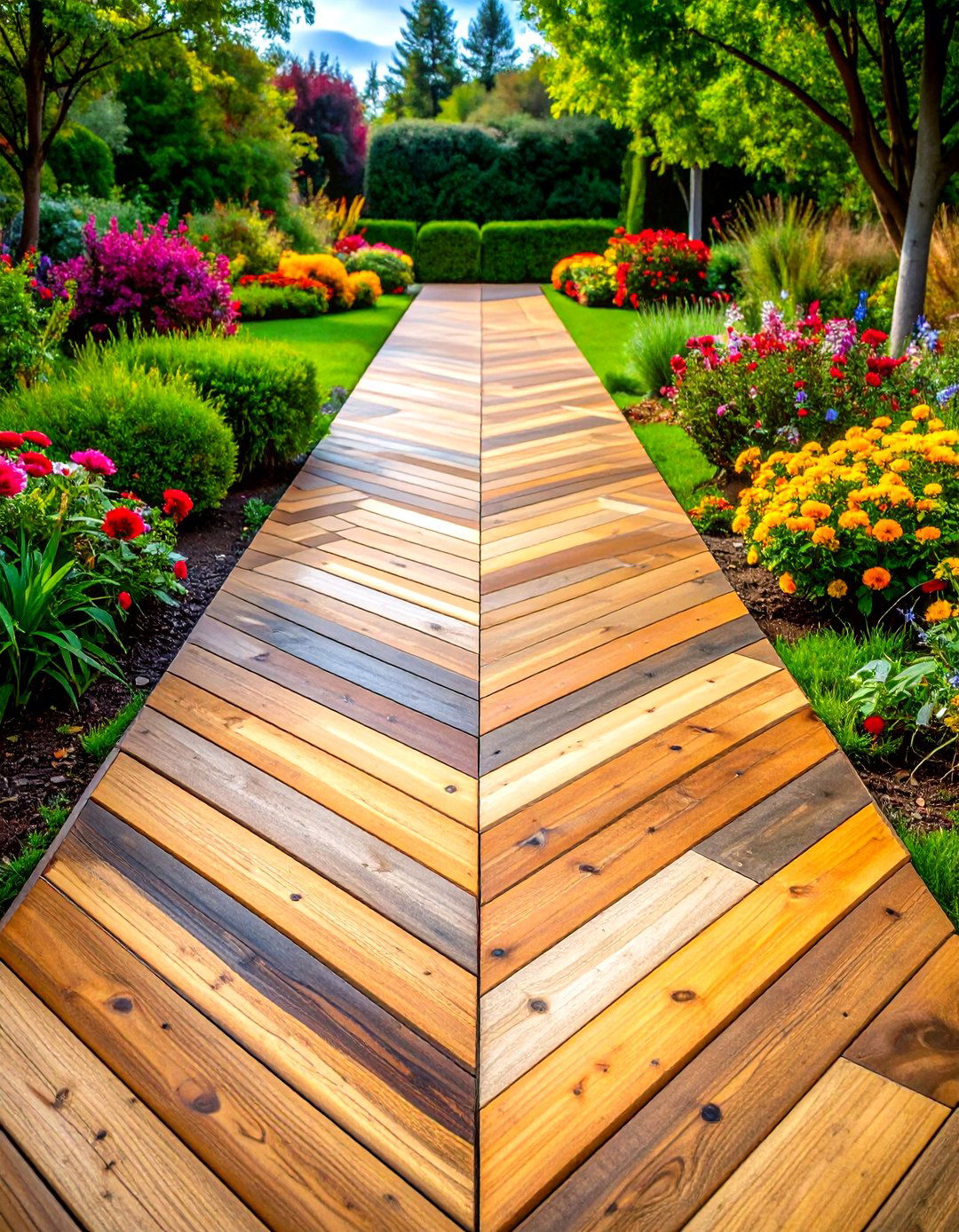


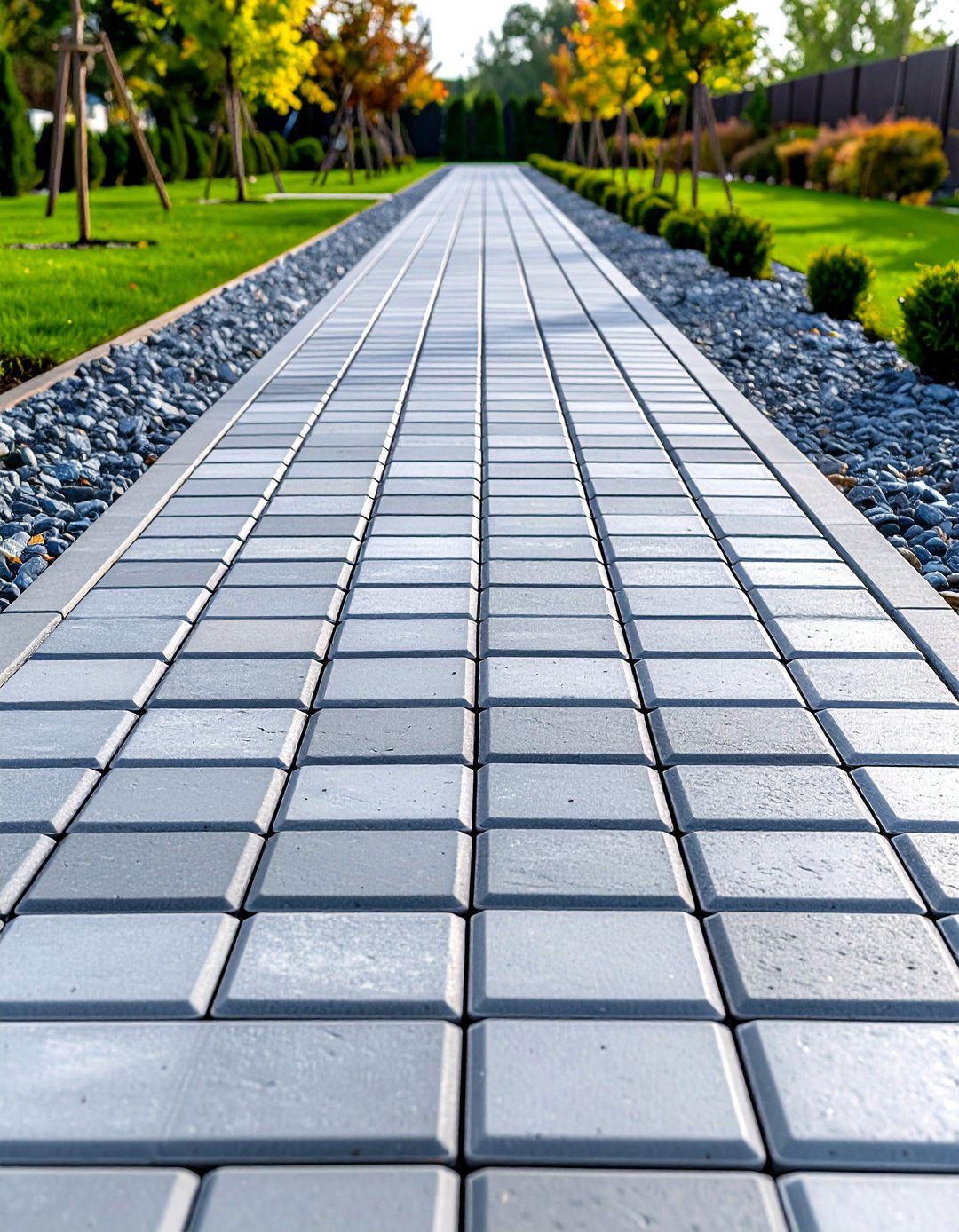
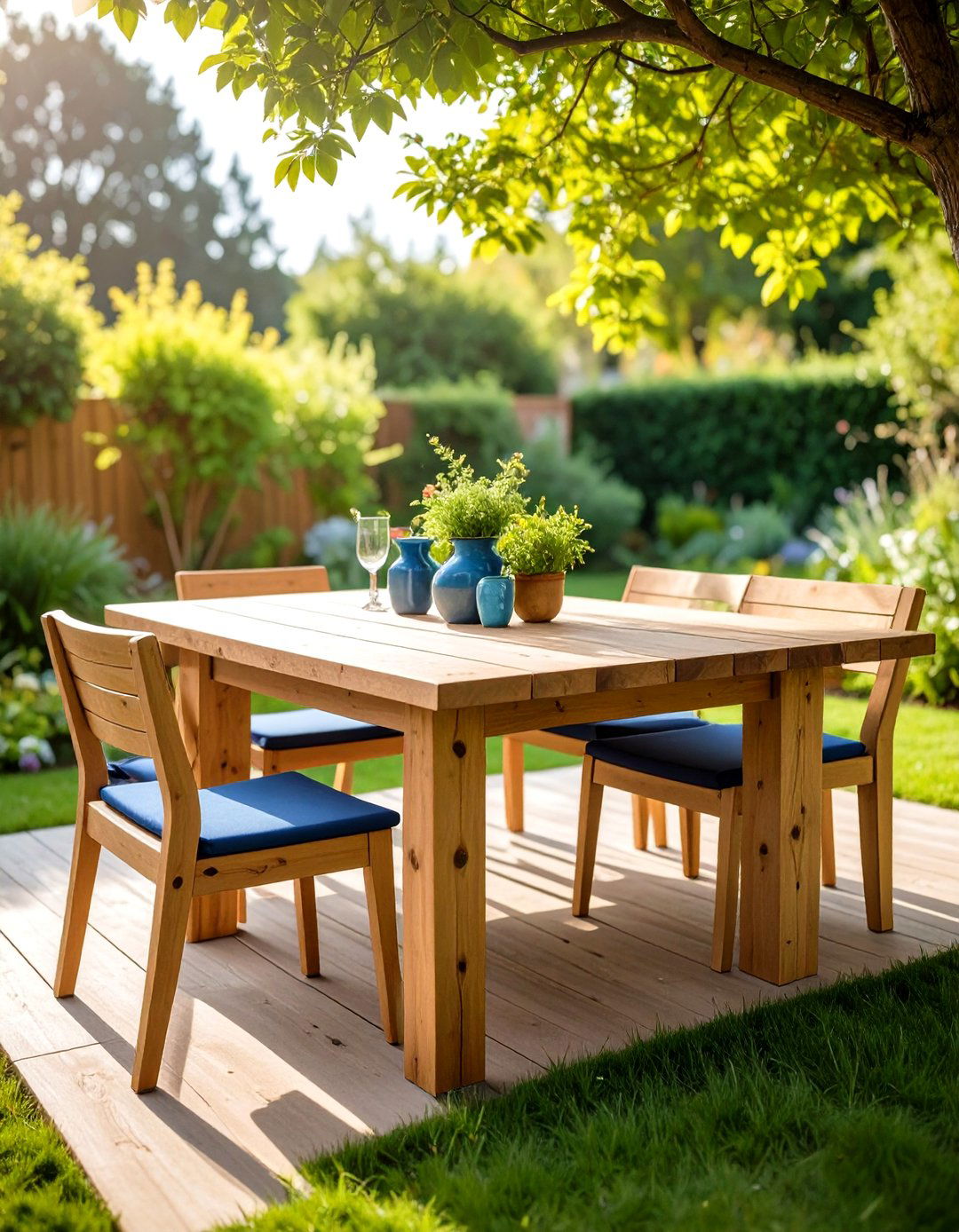
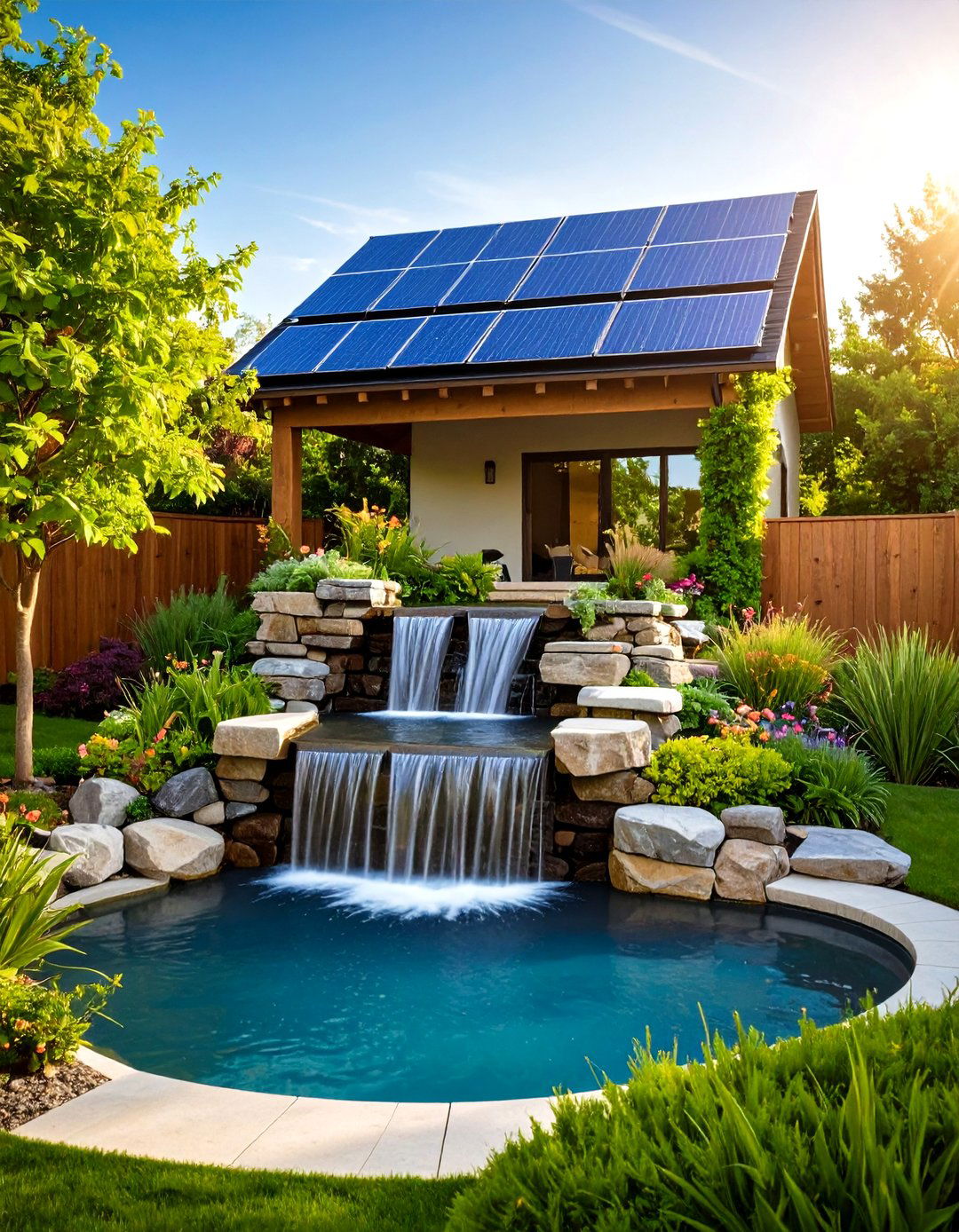

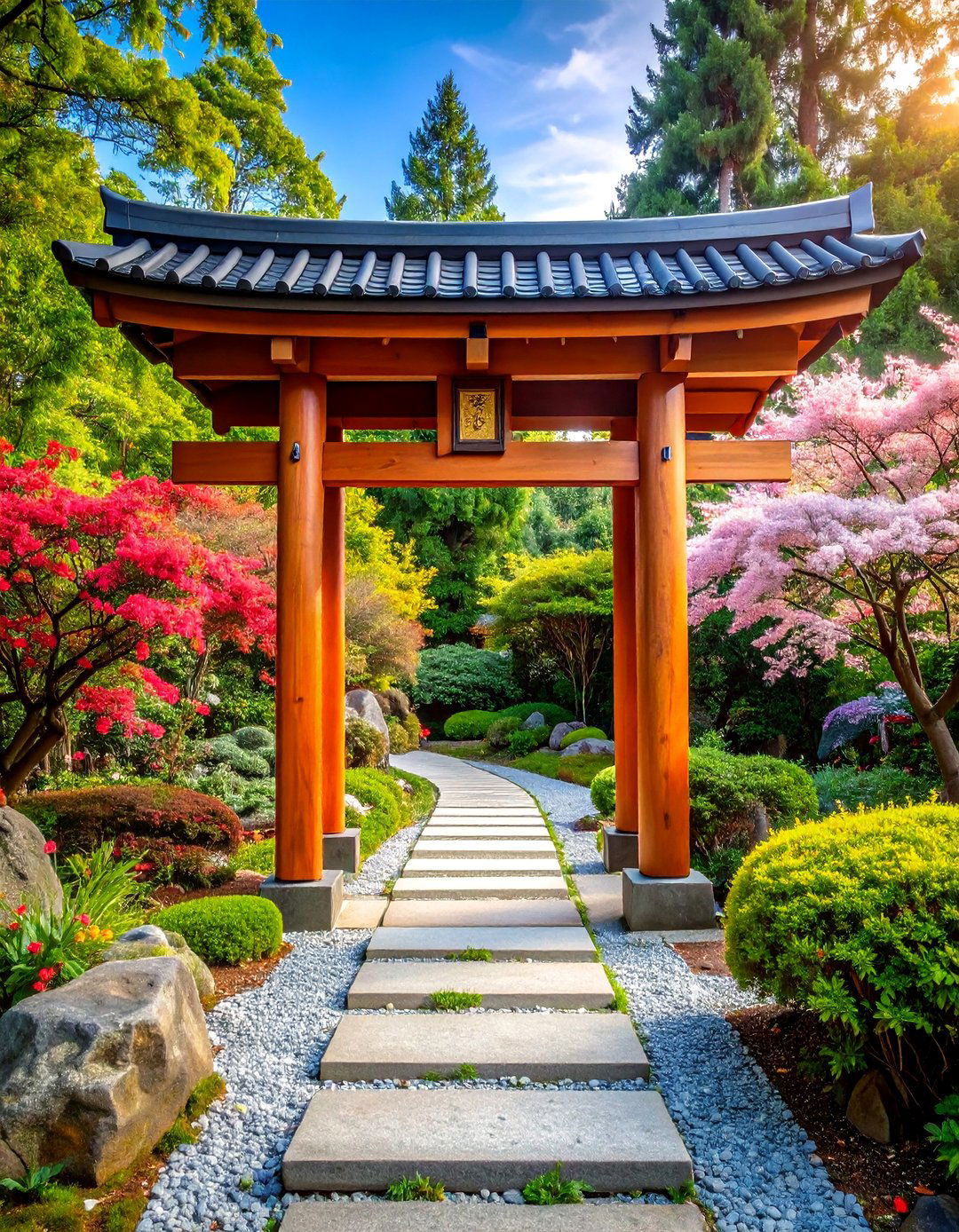
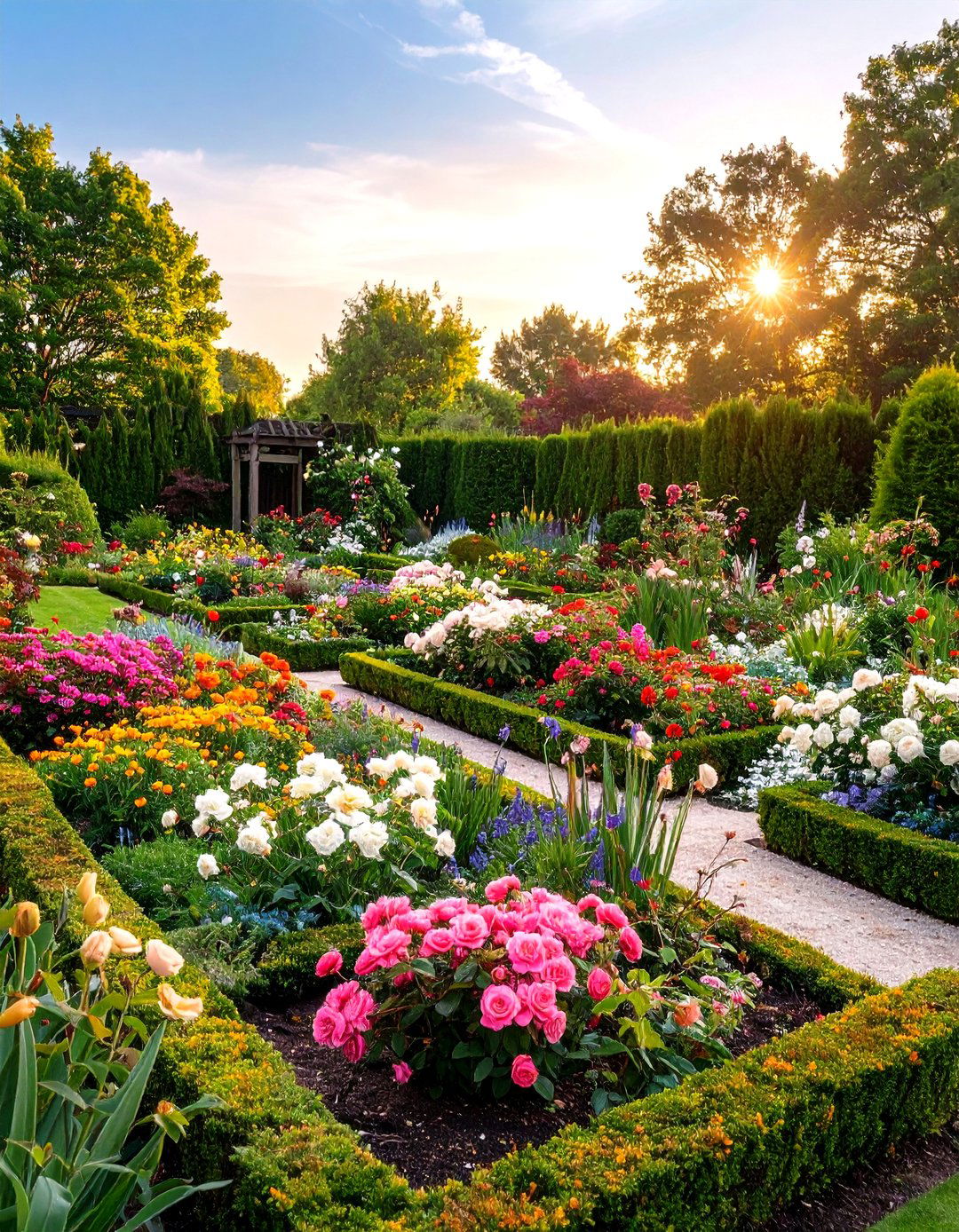


Leave a Reply